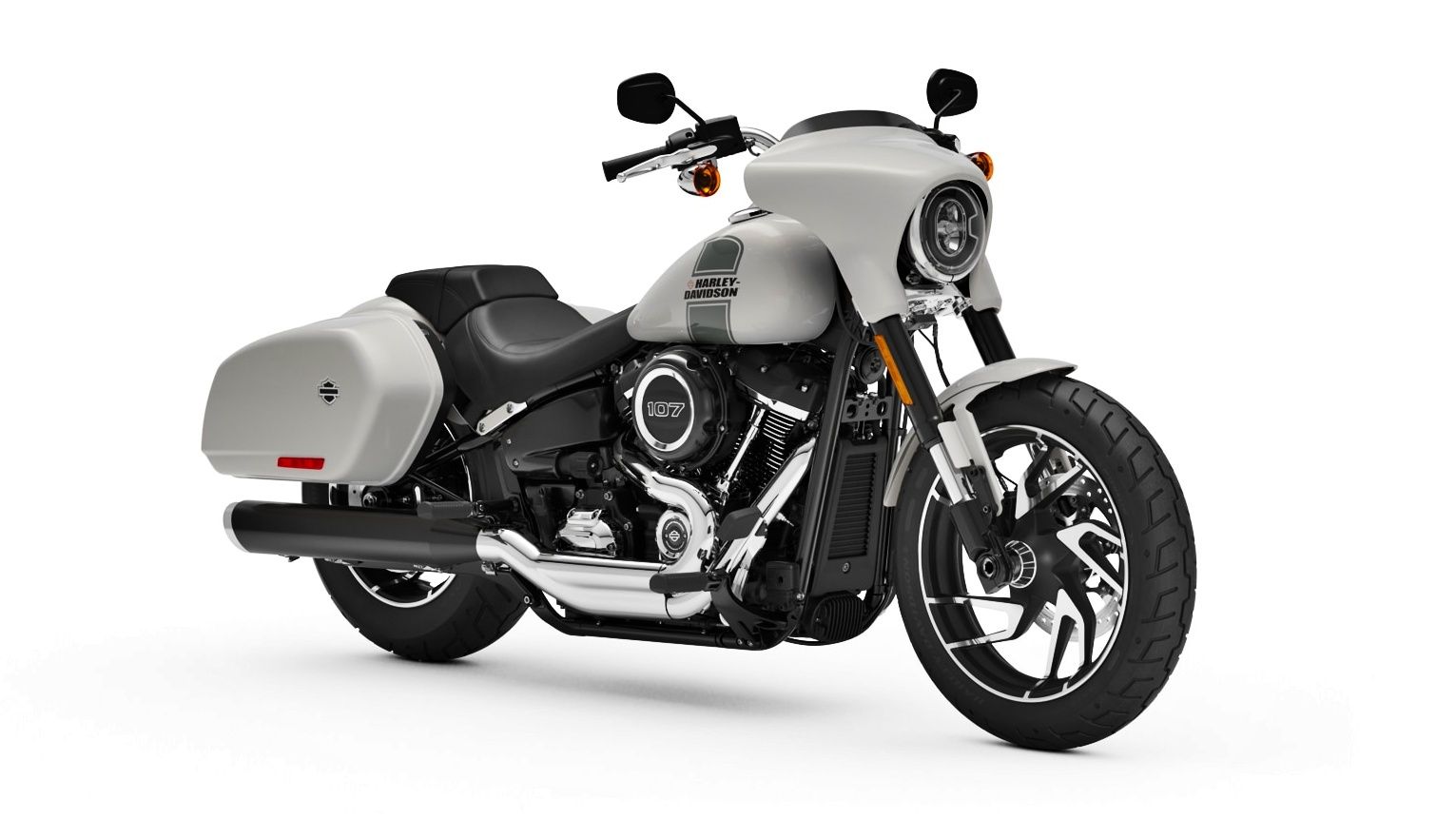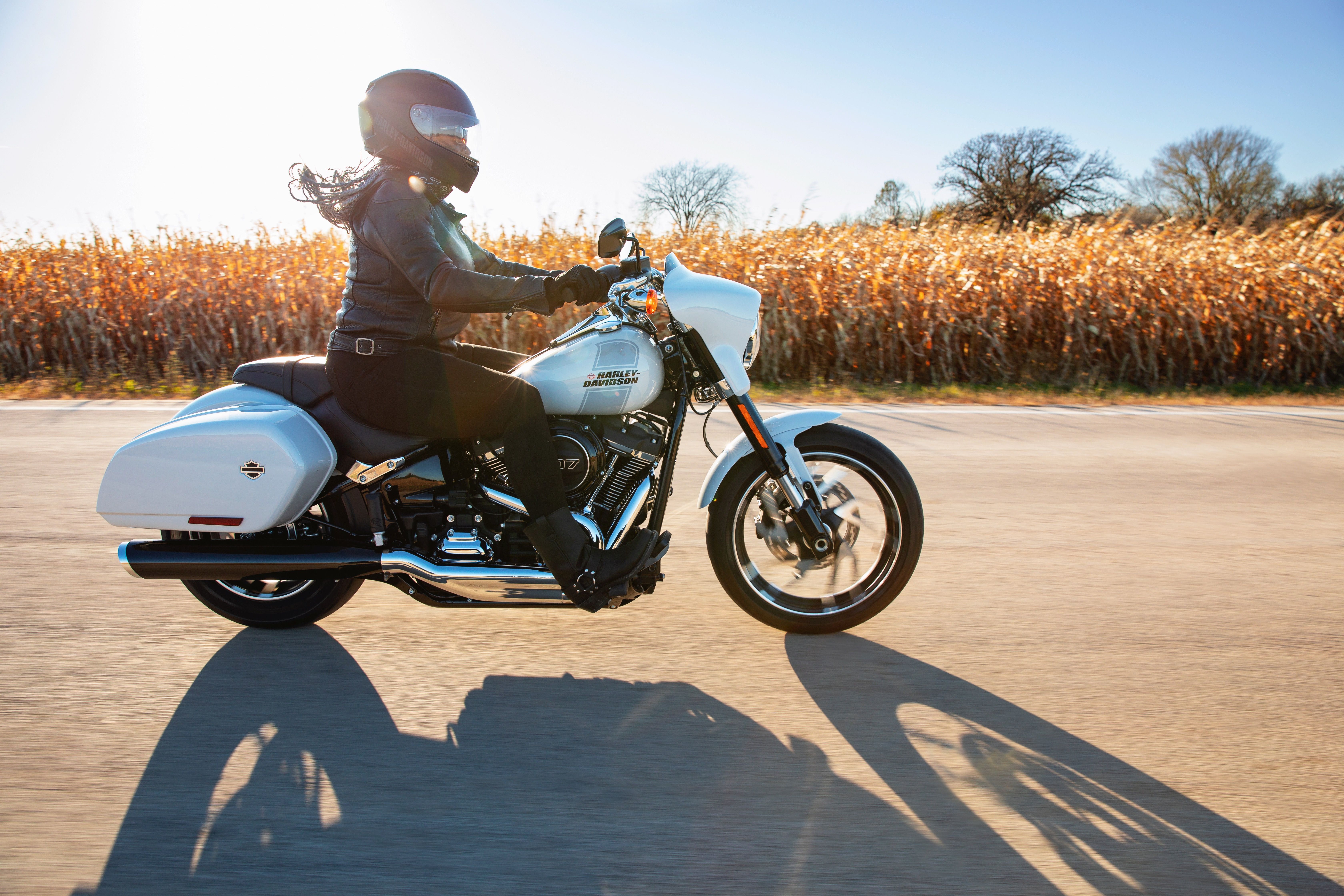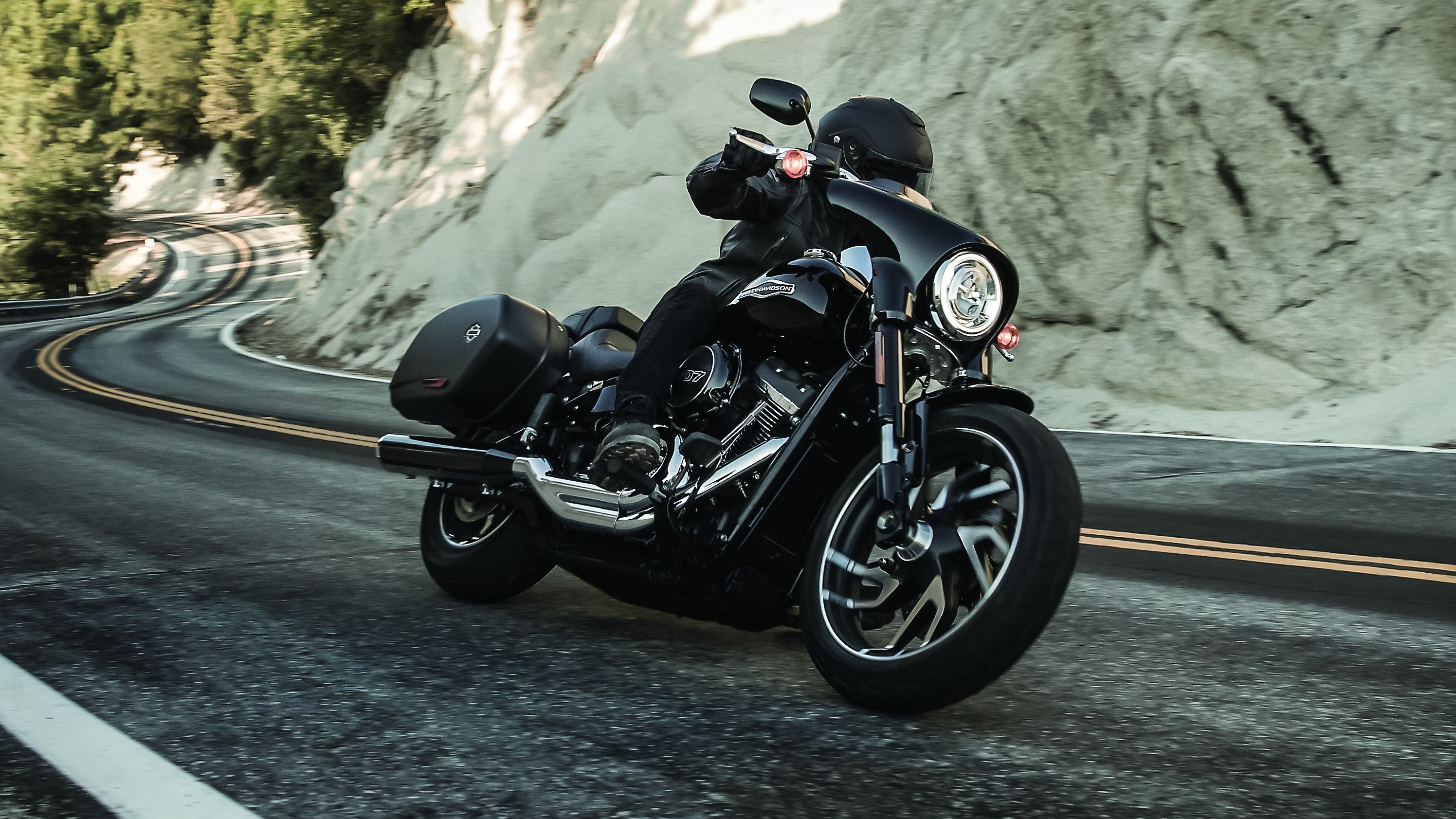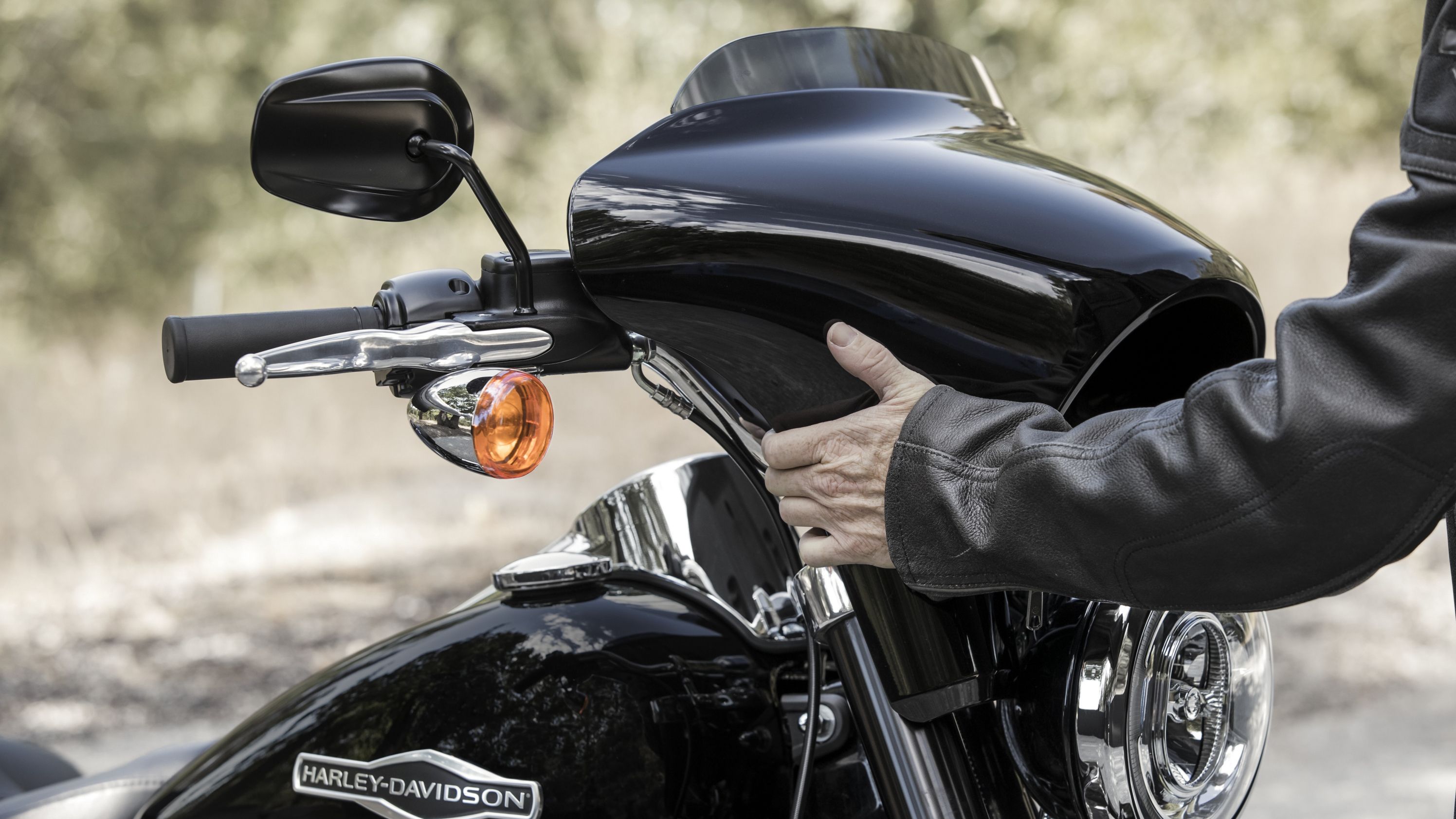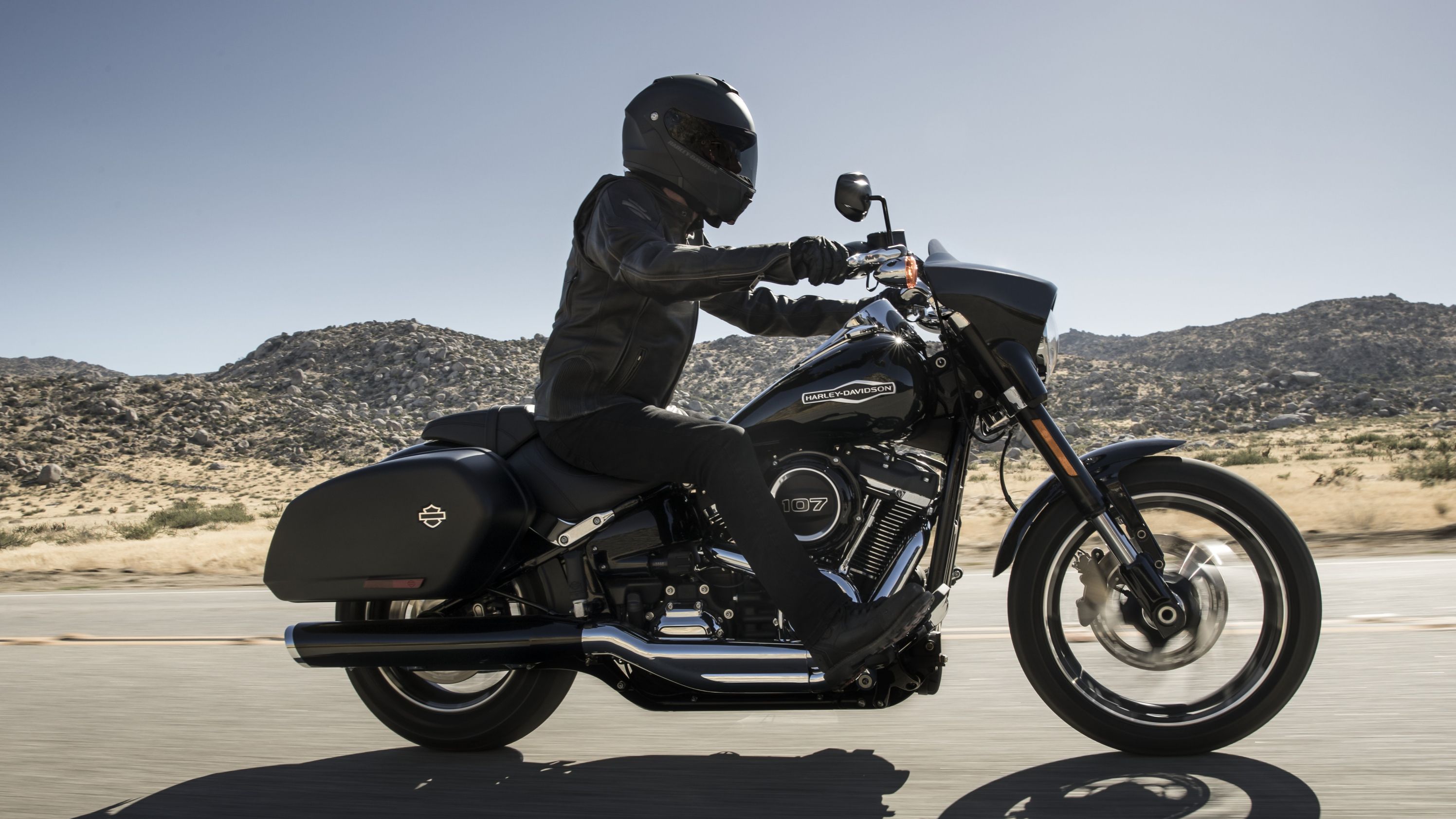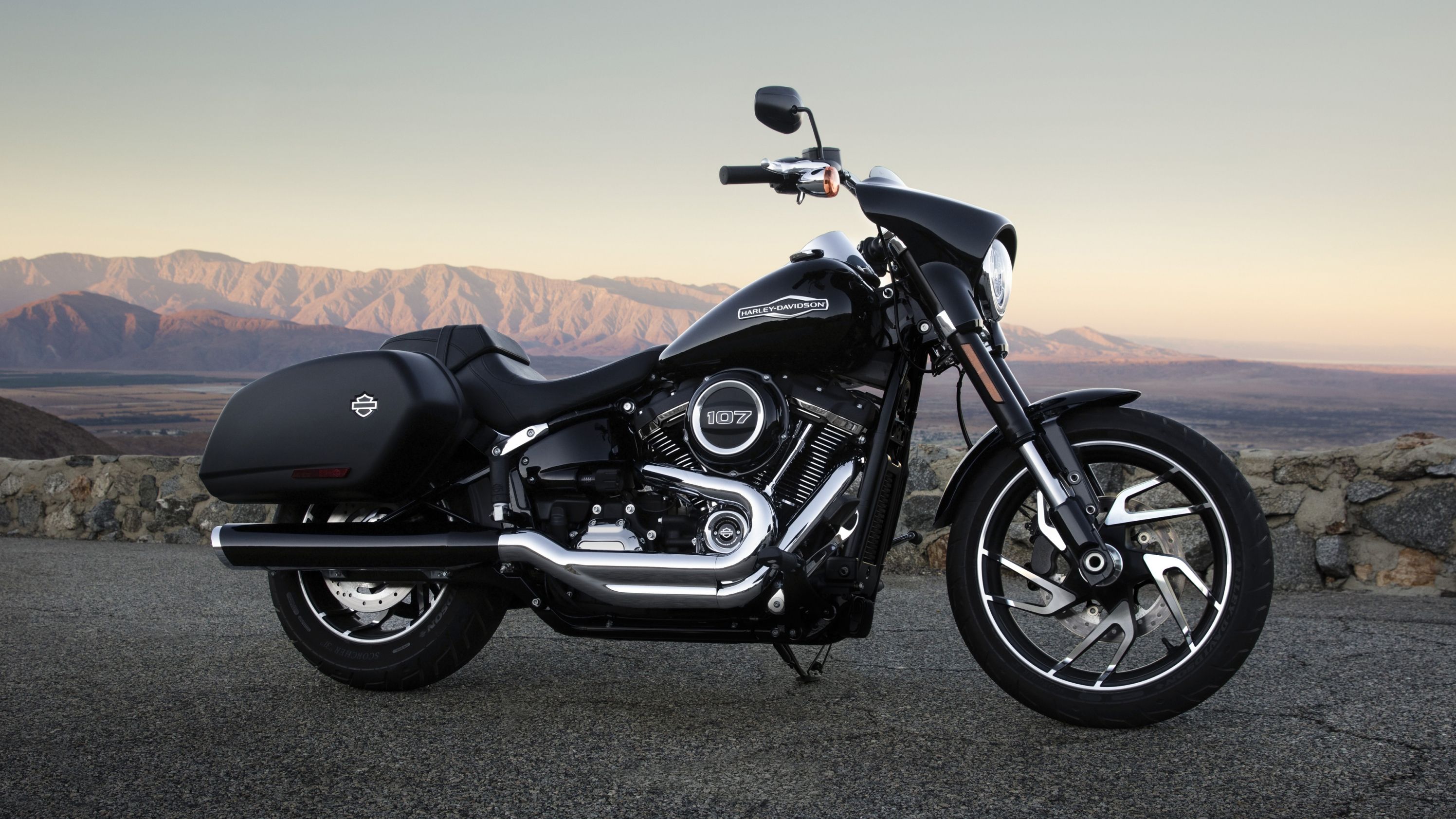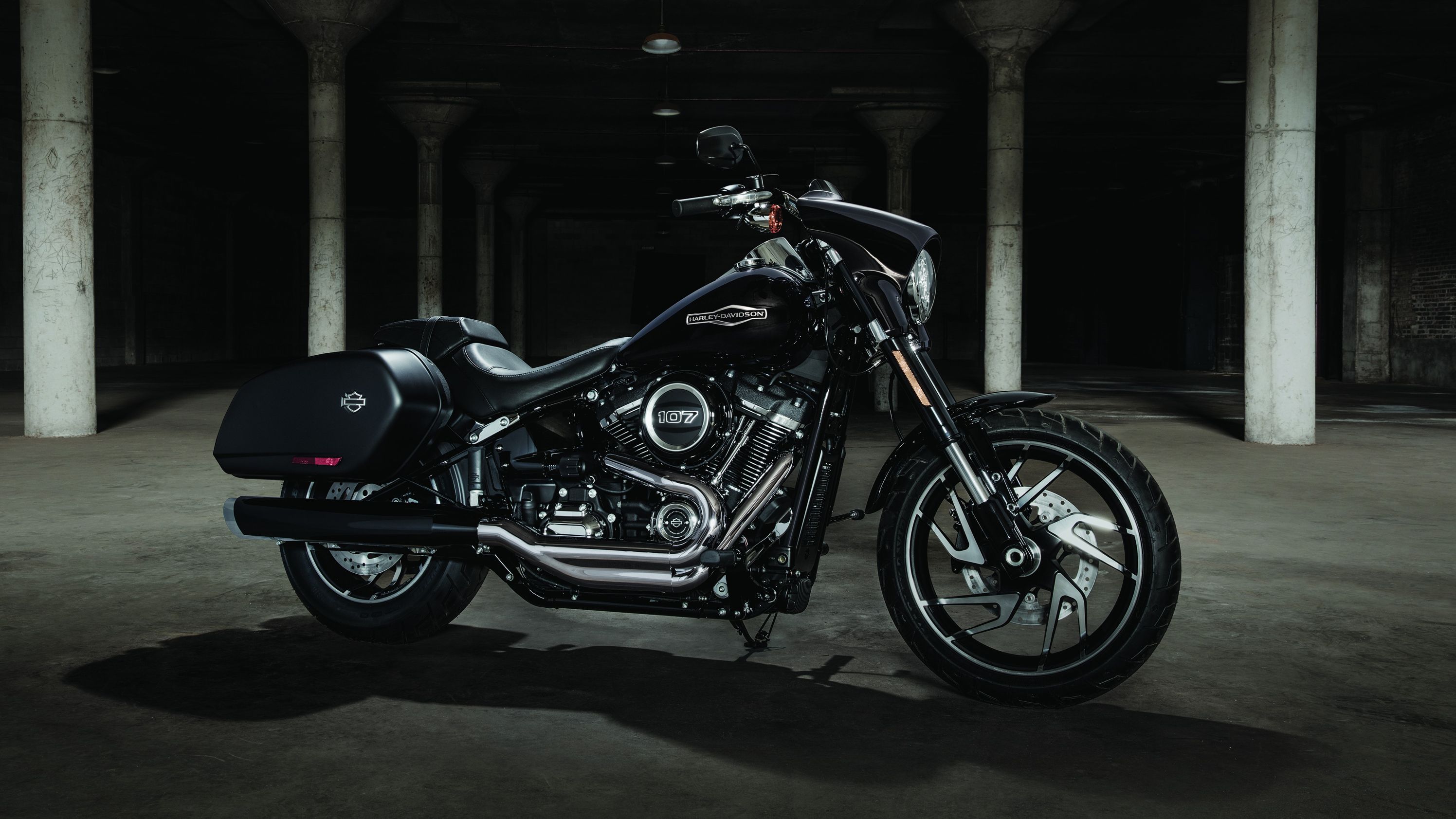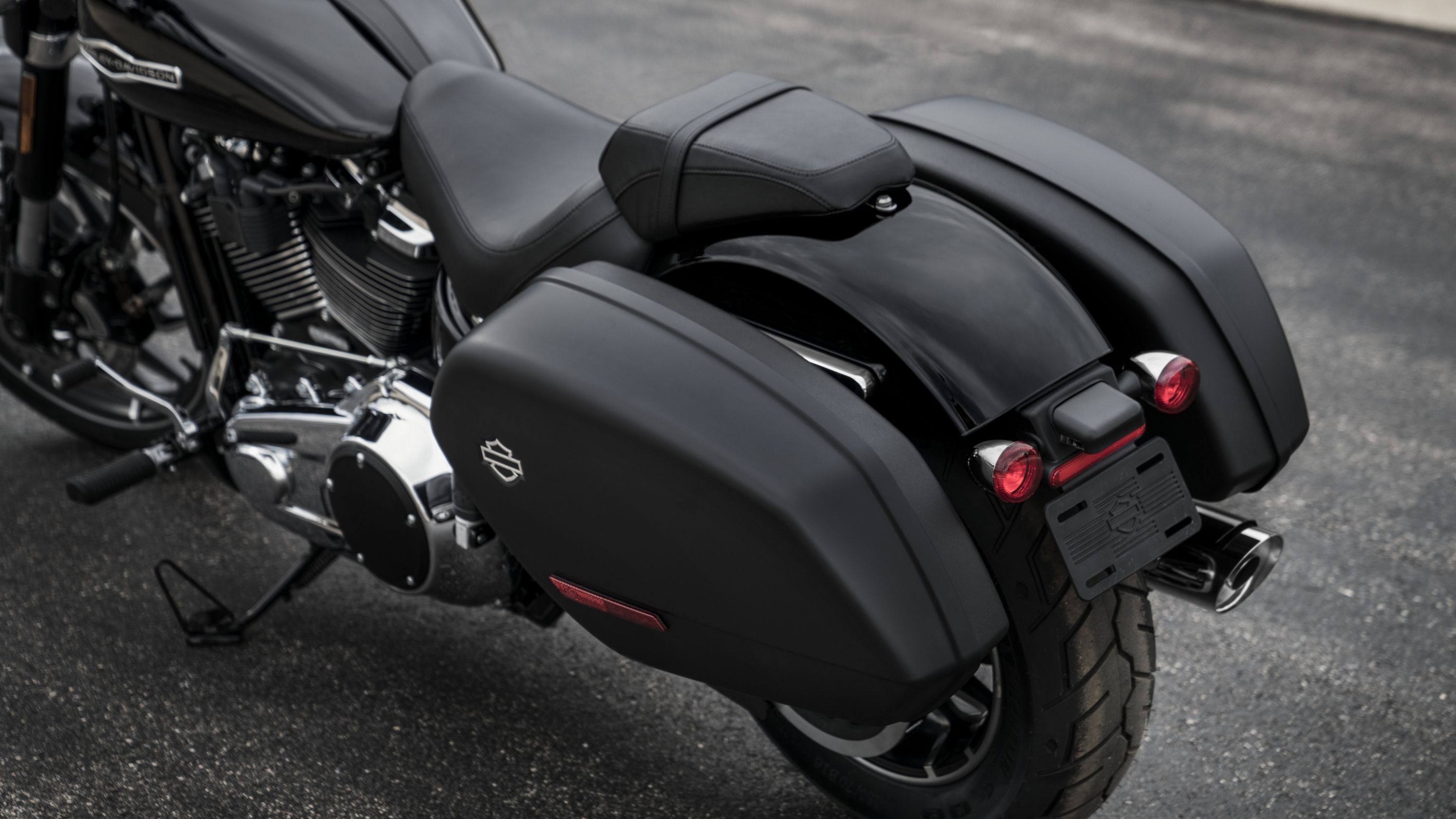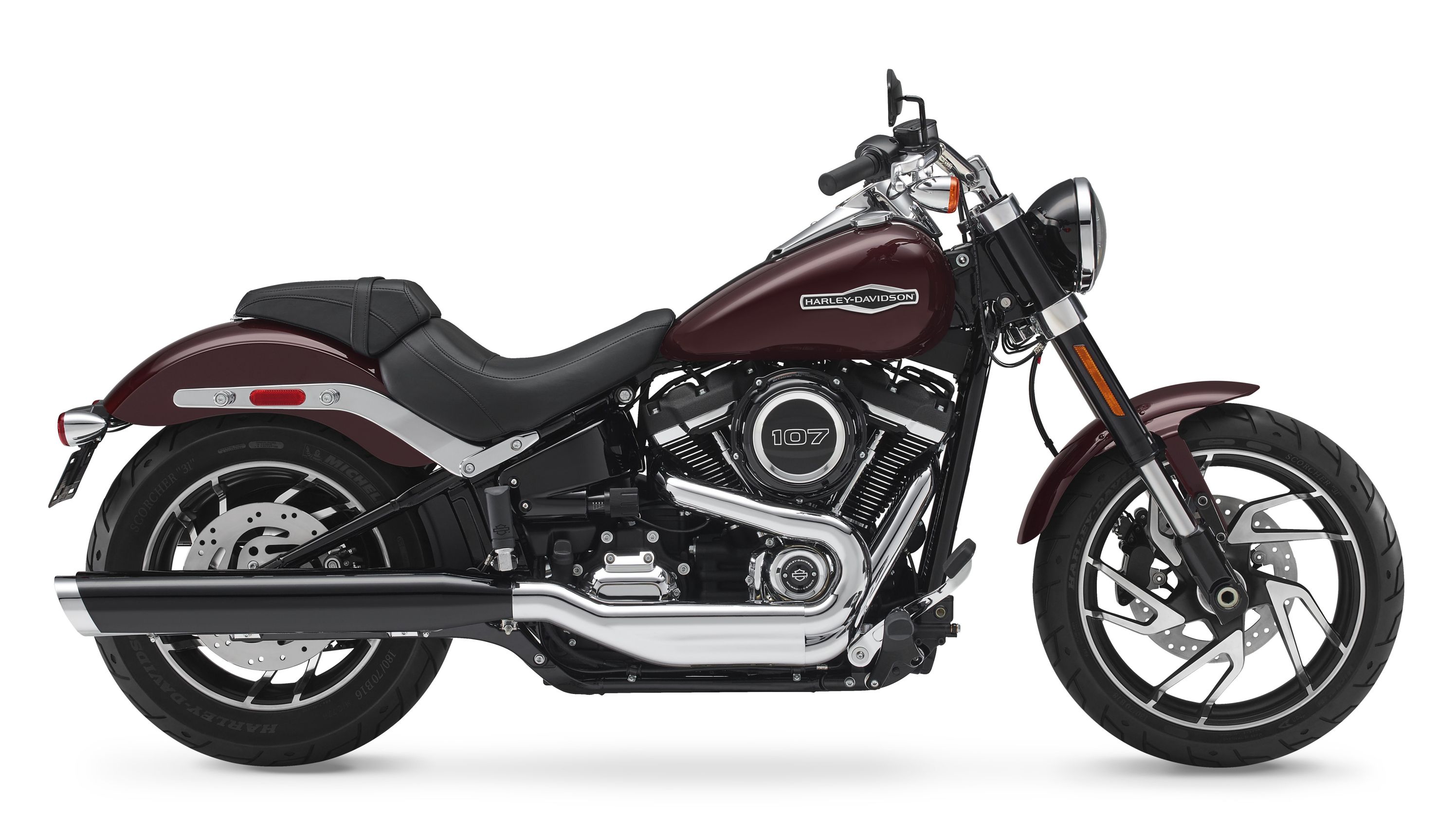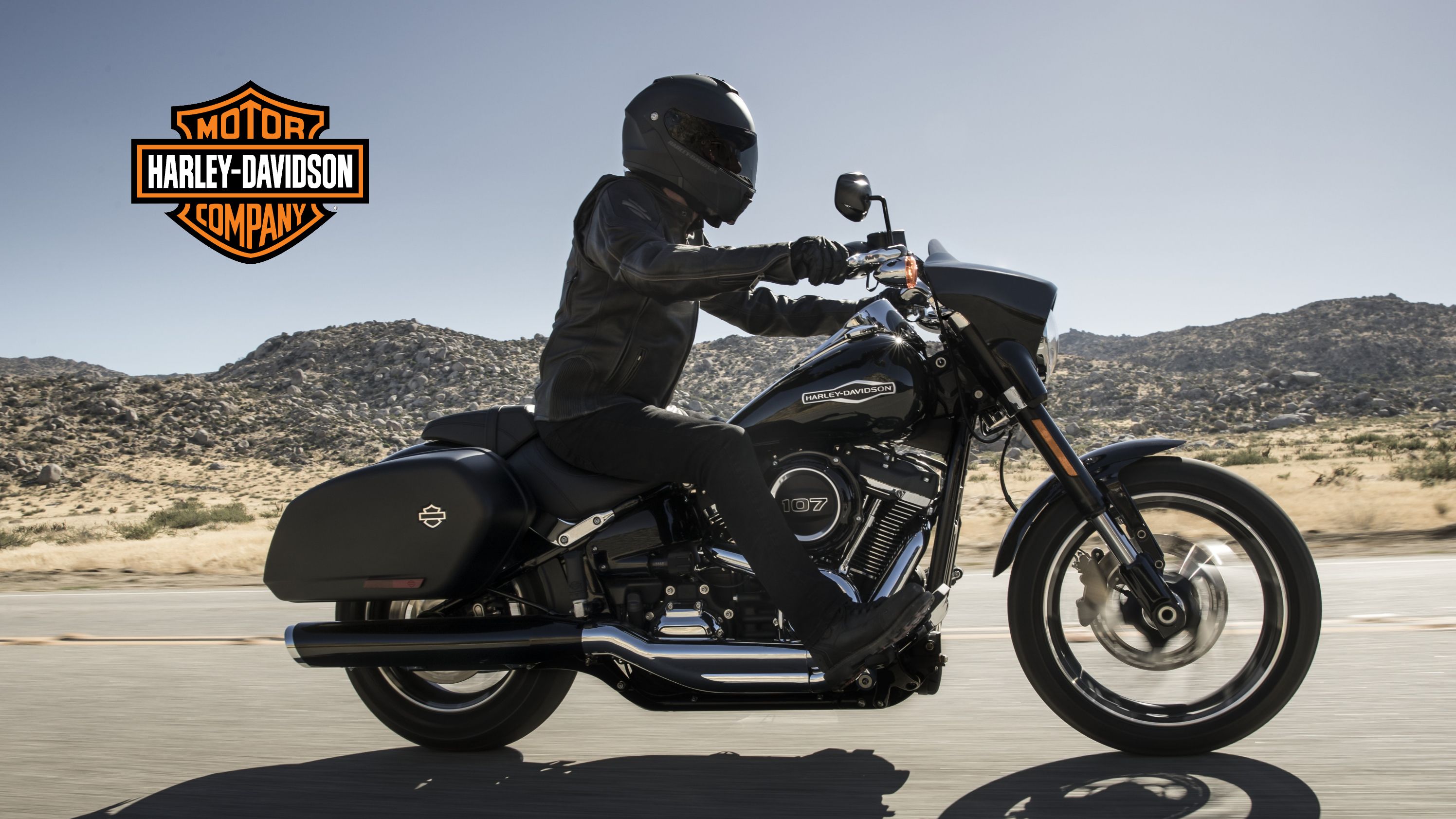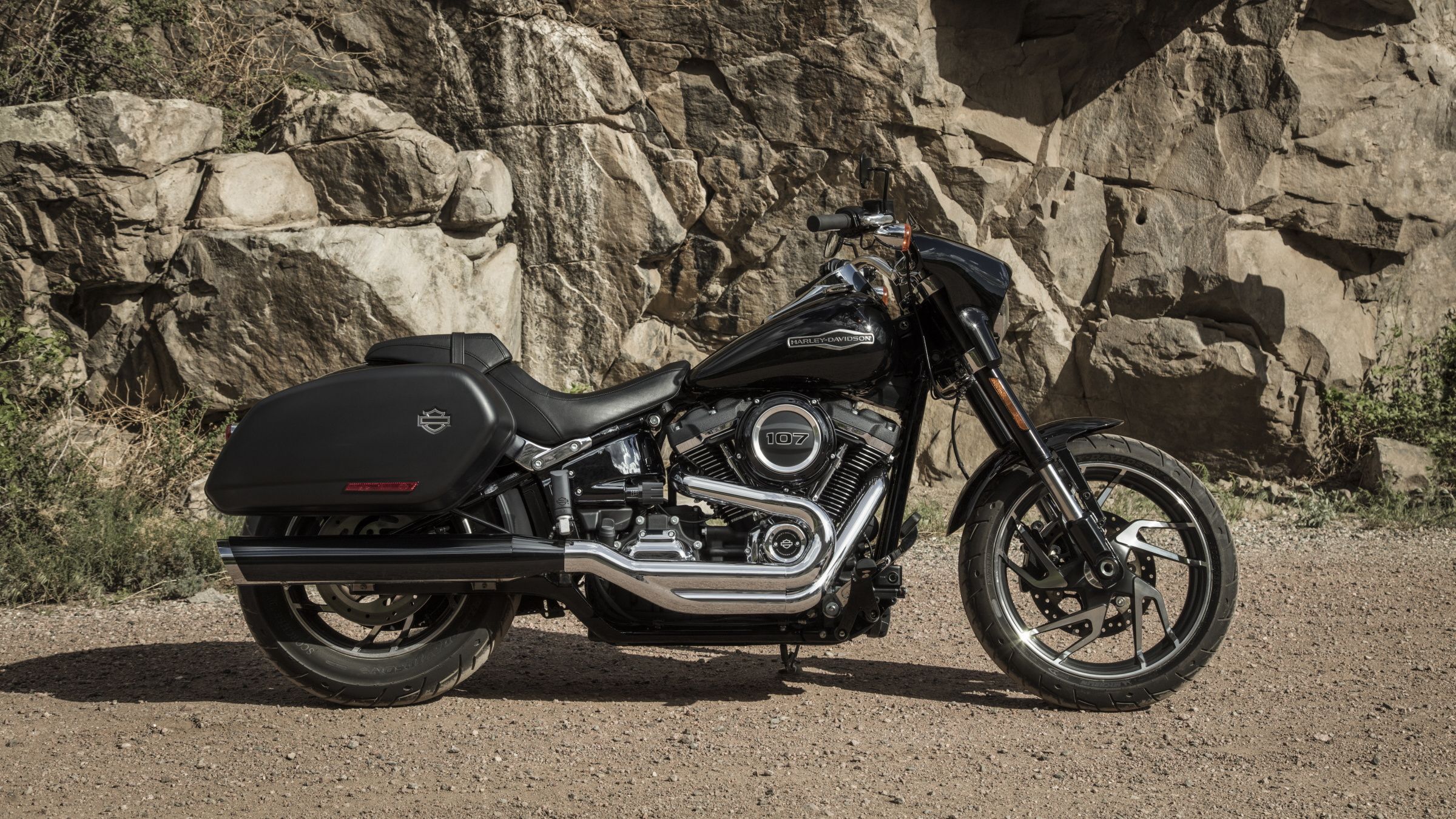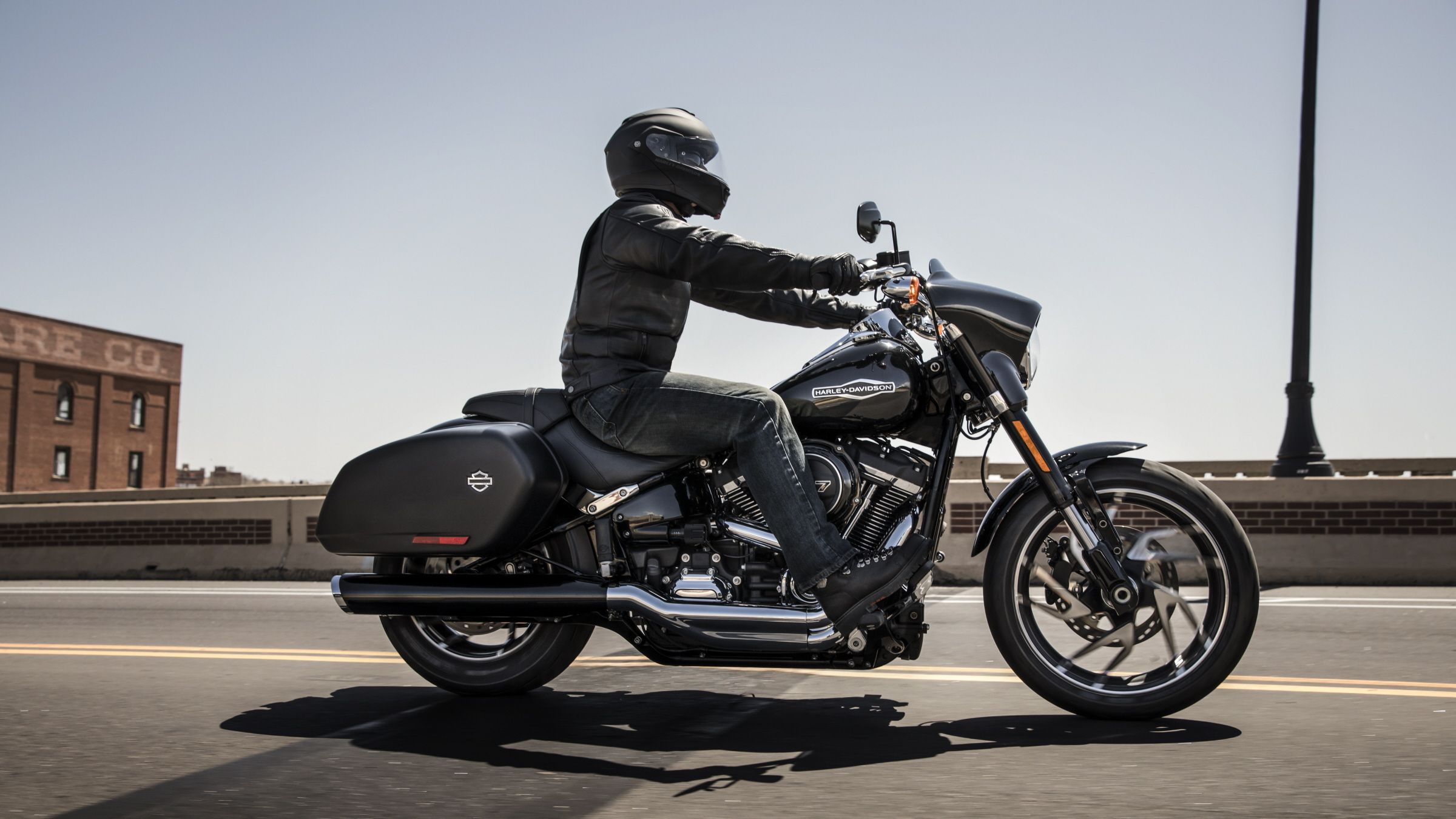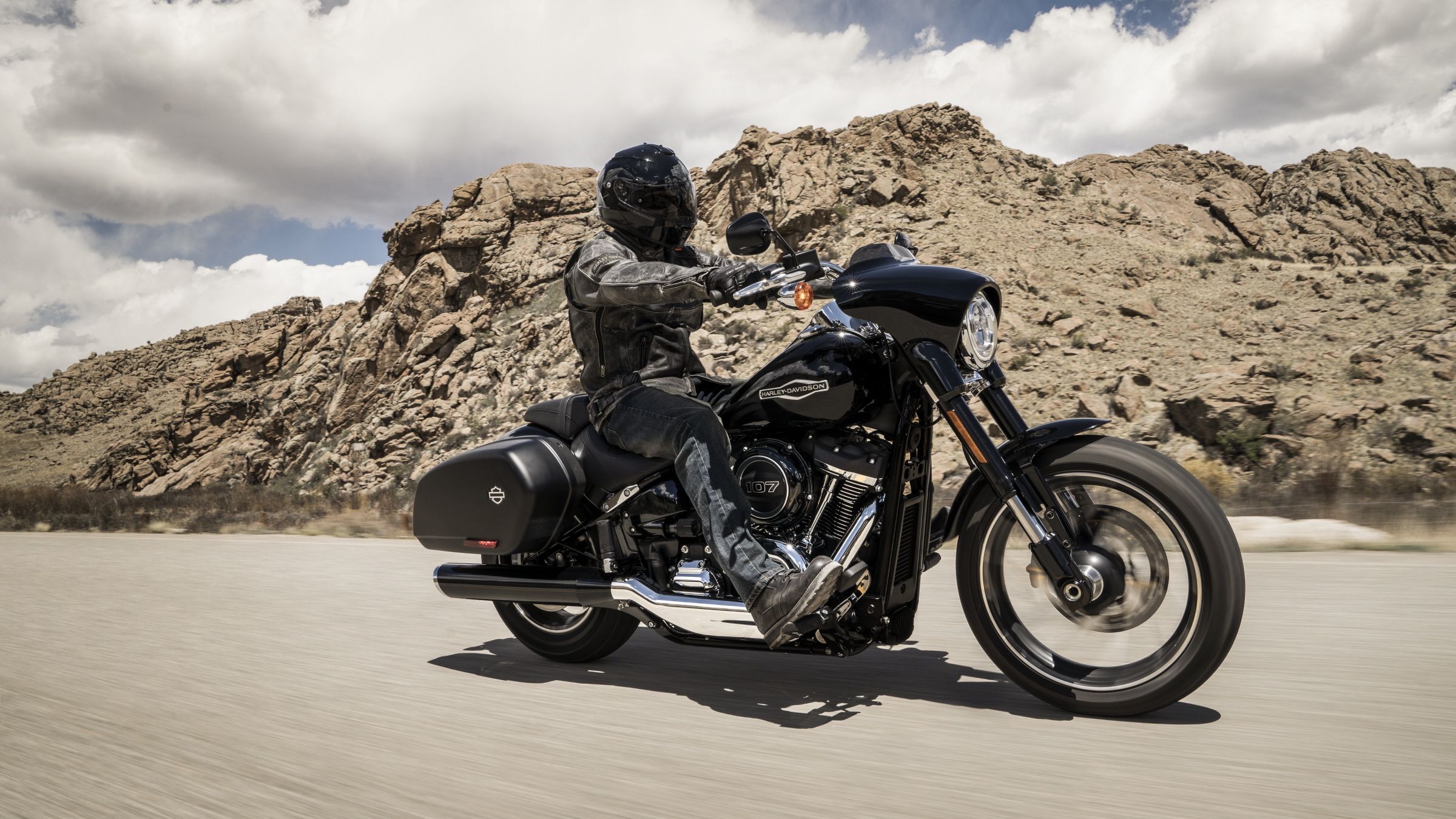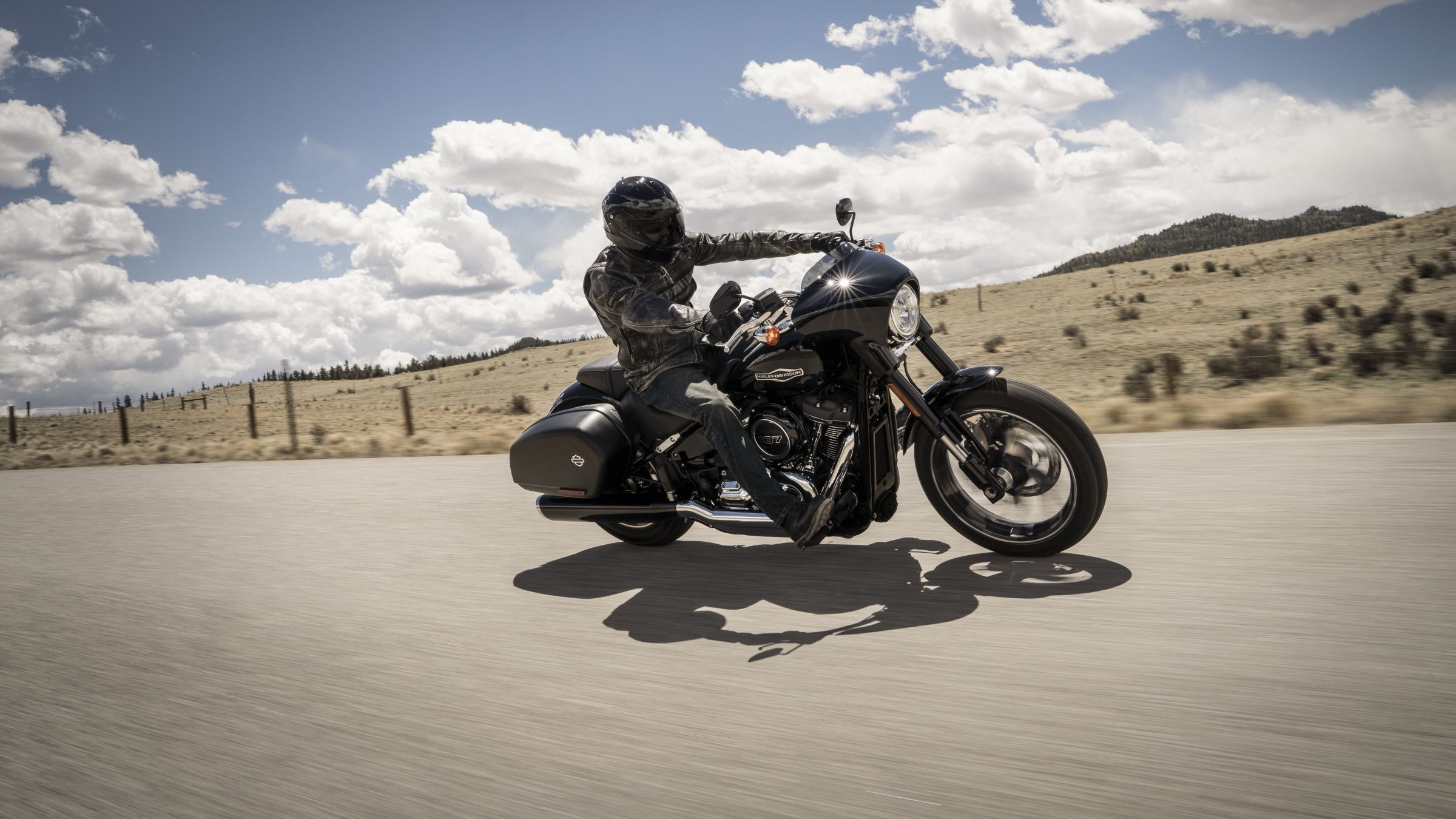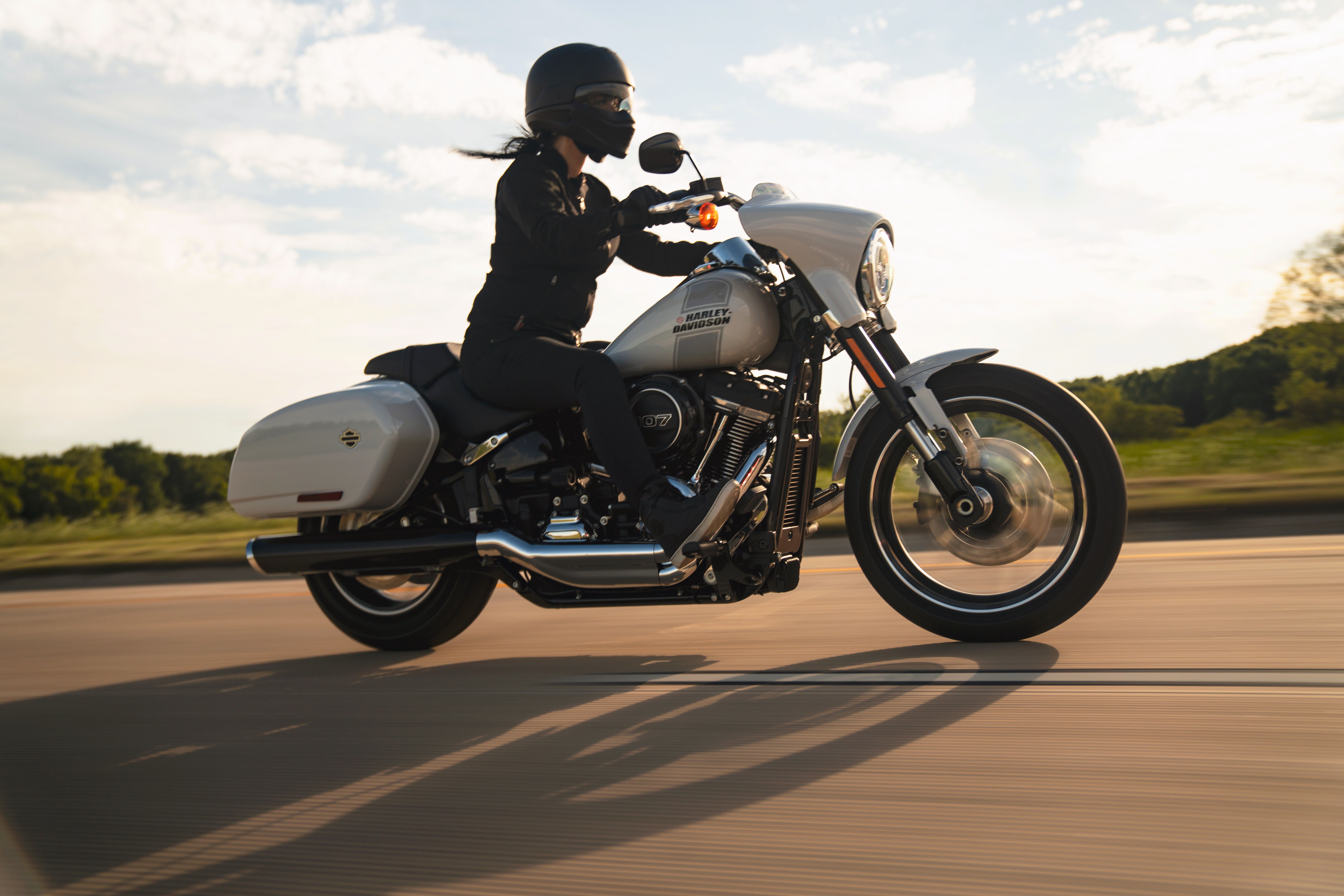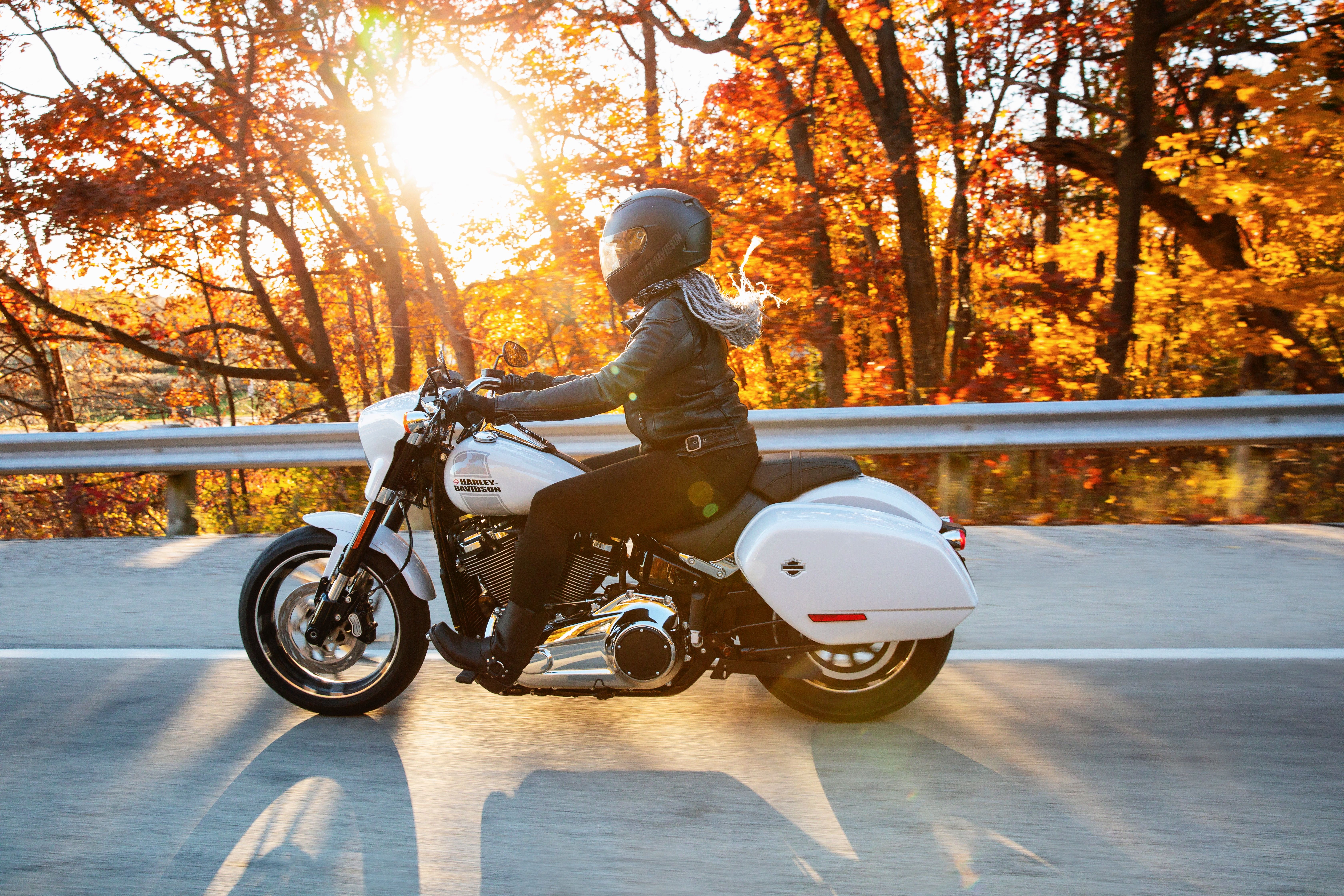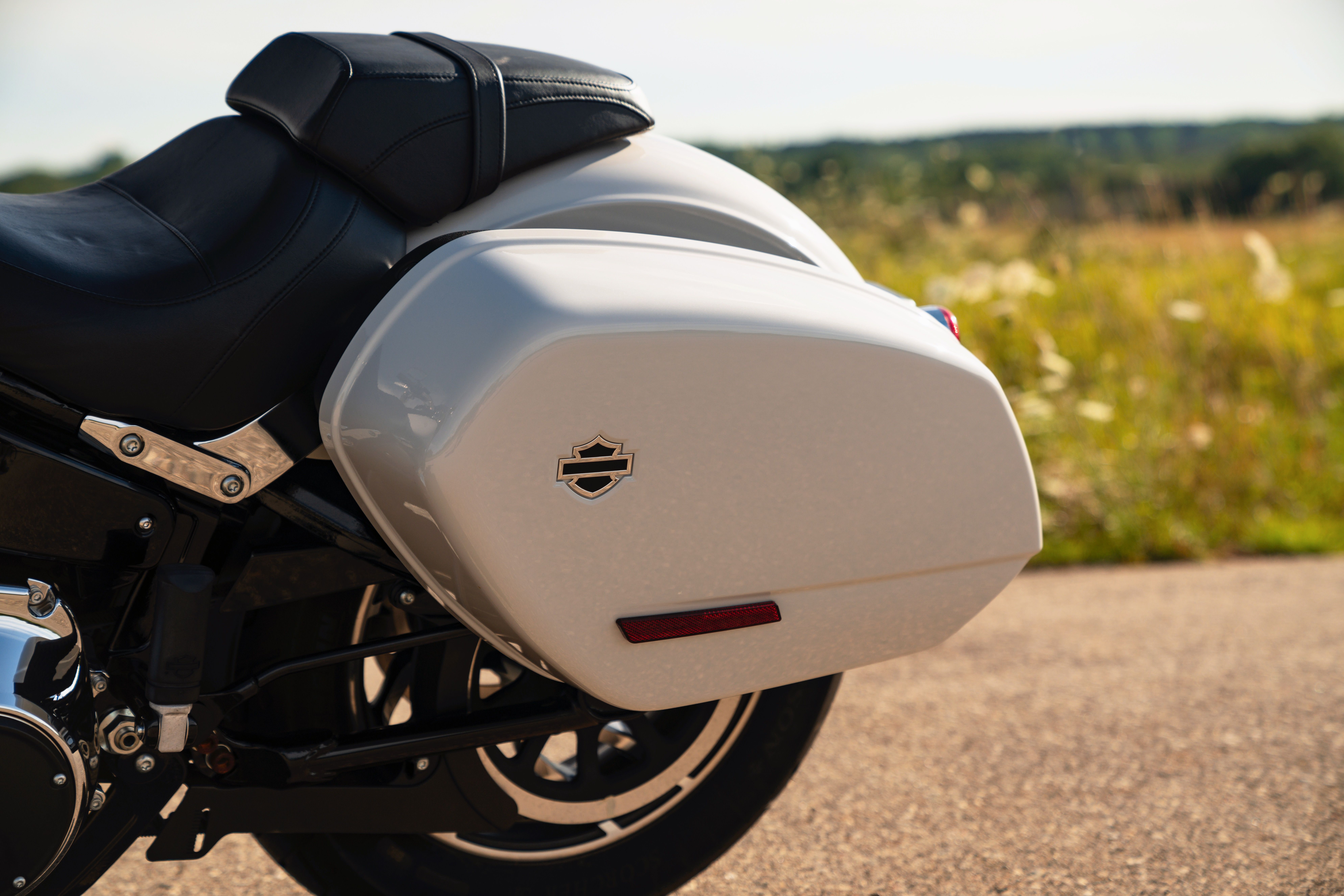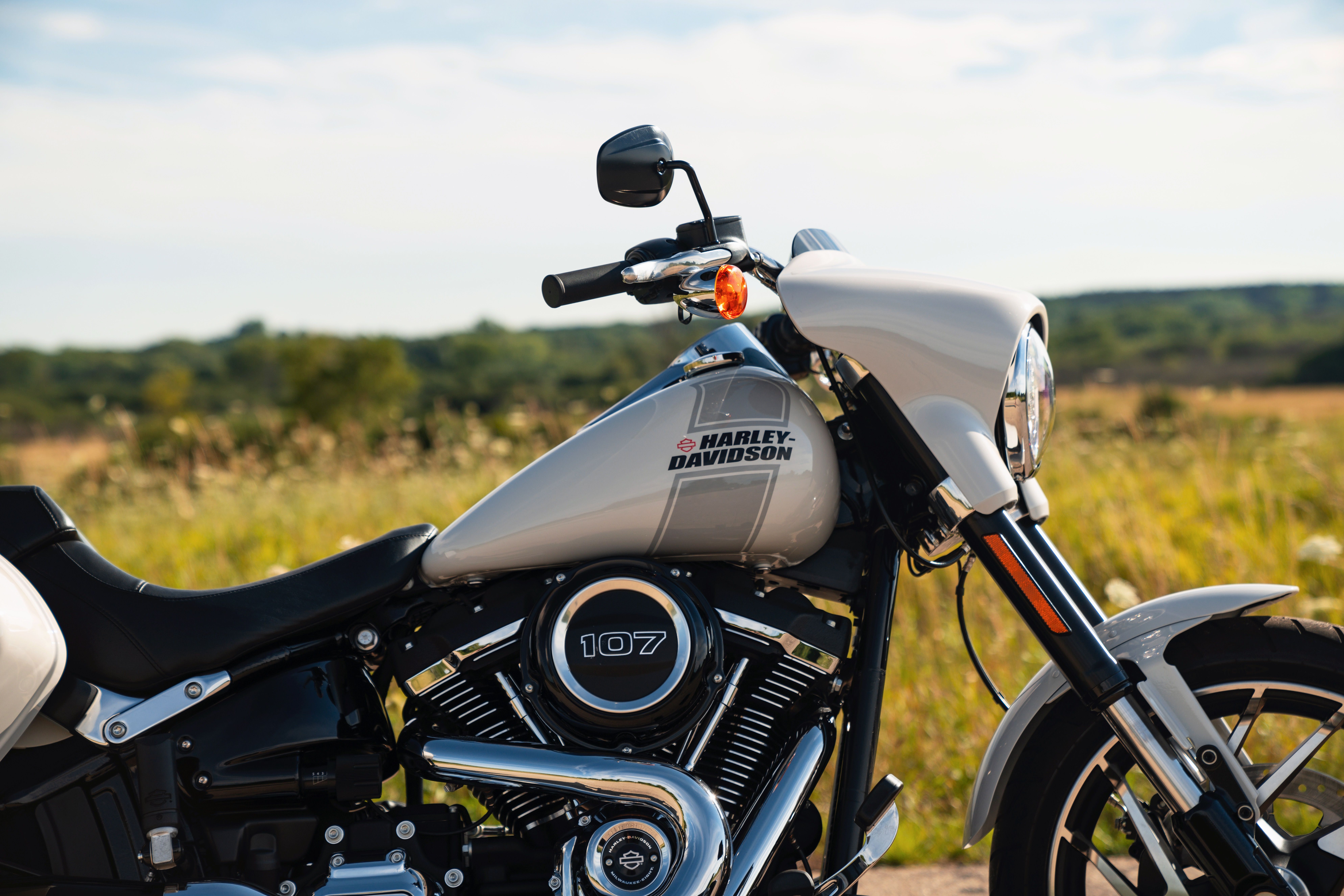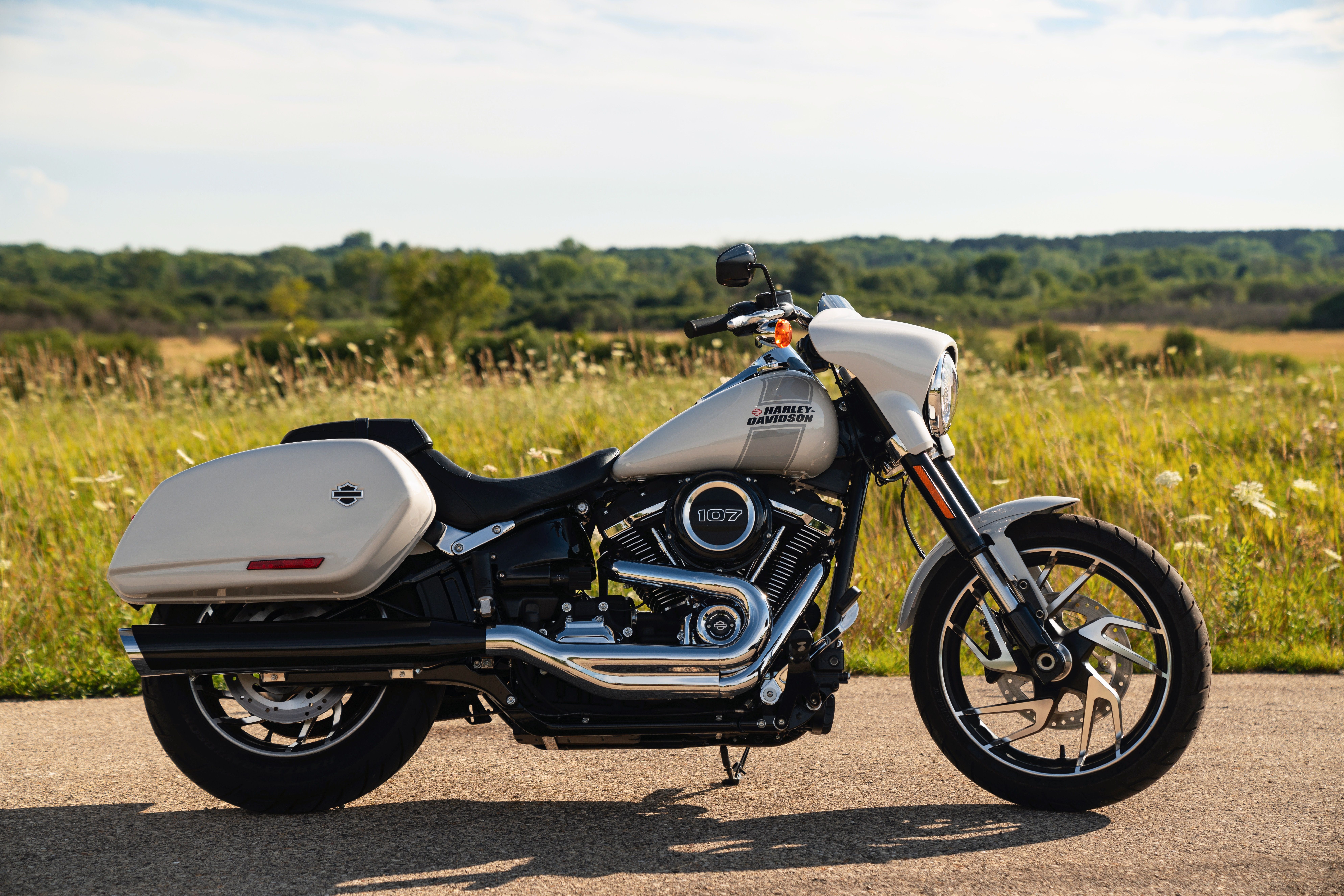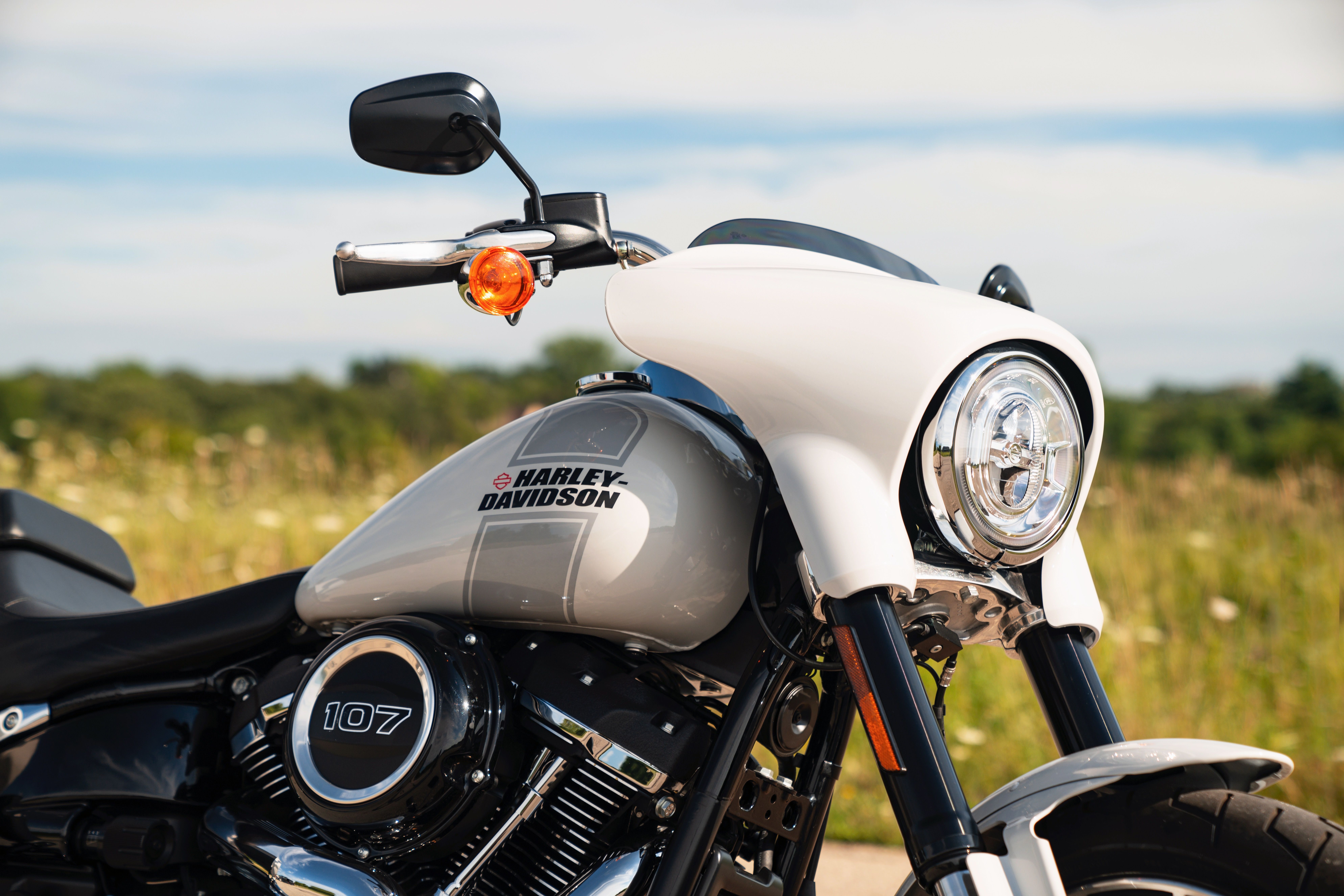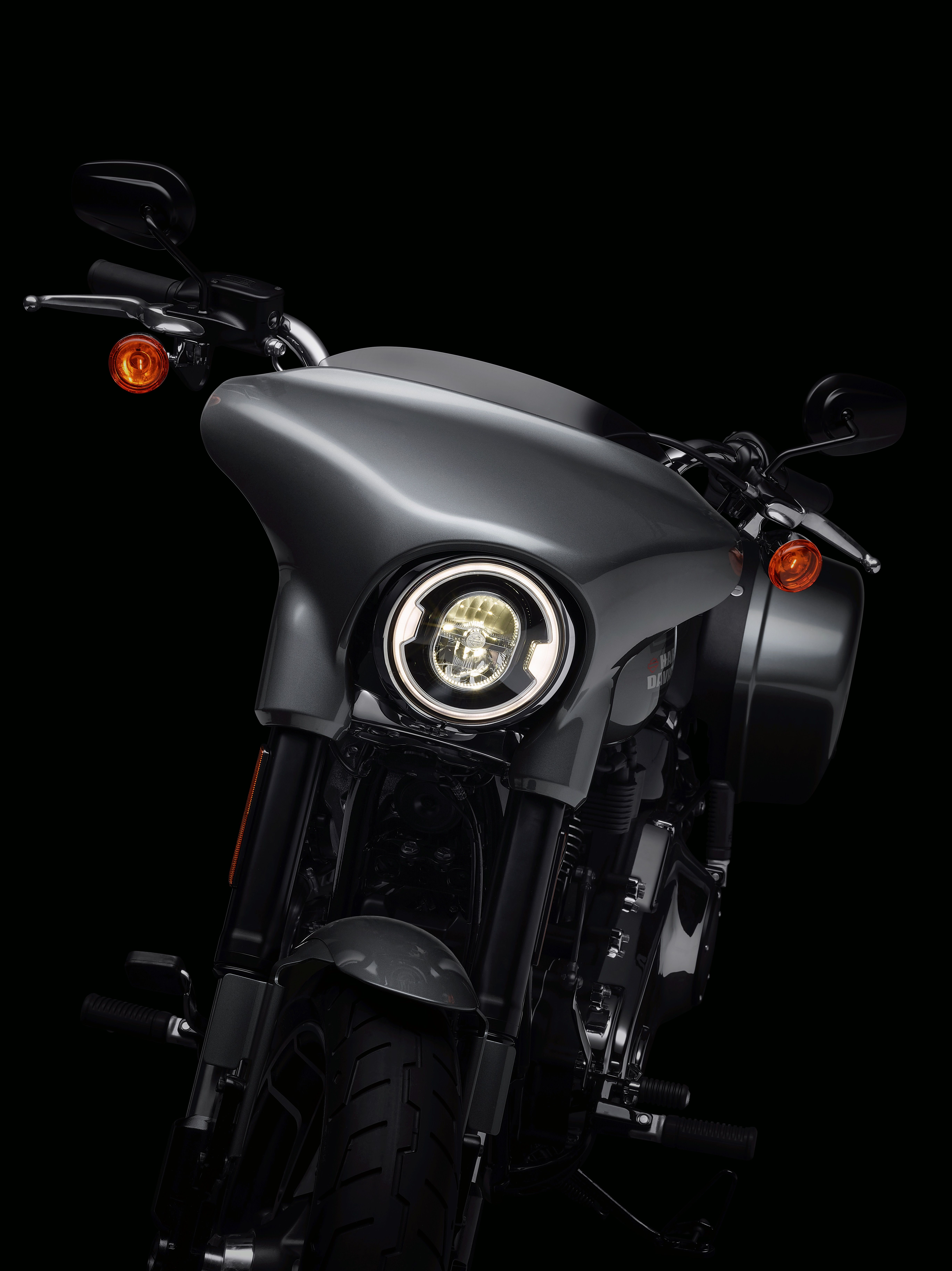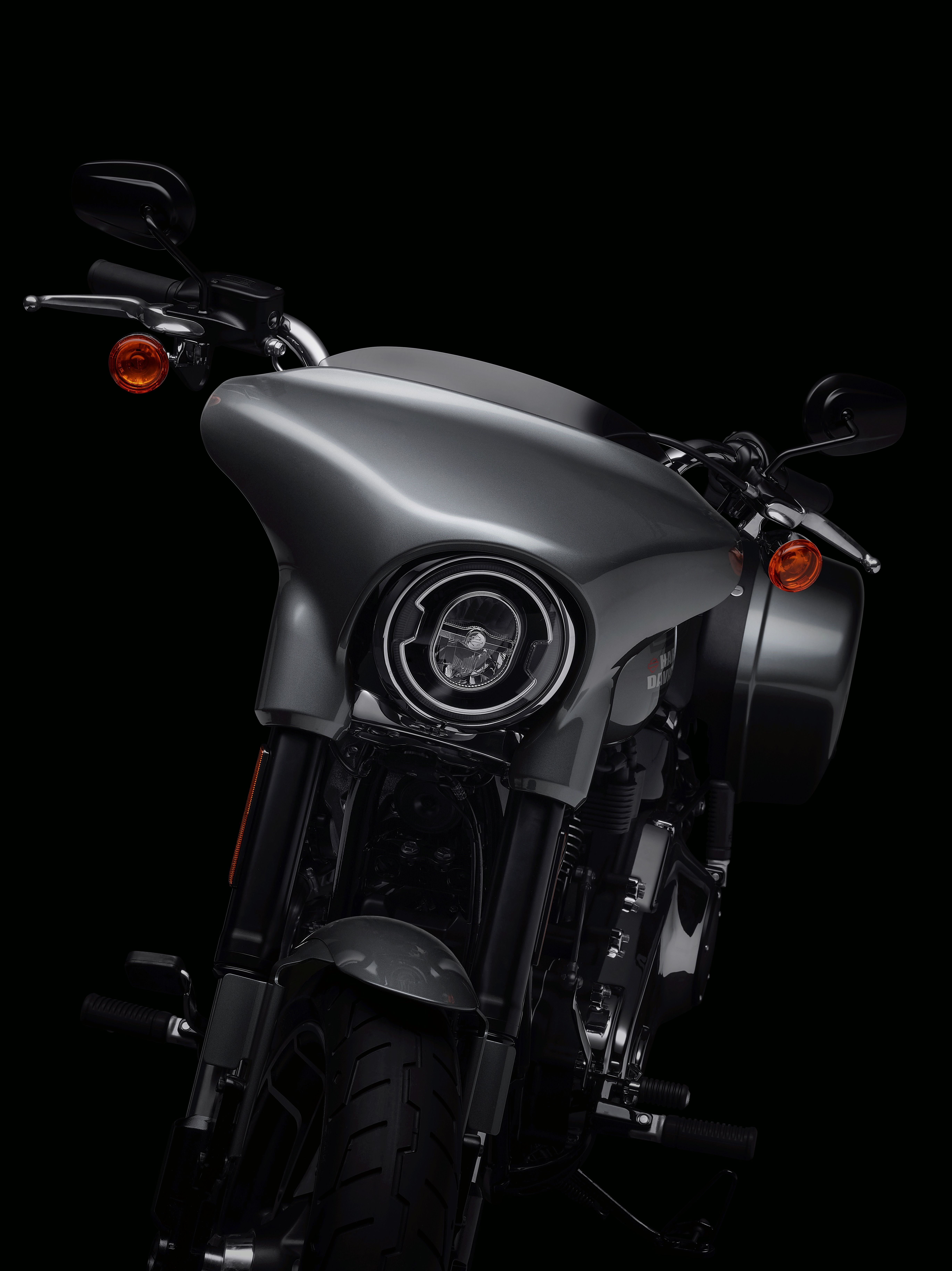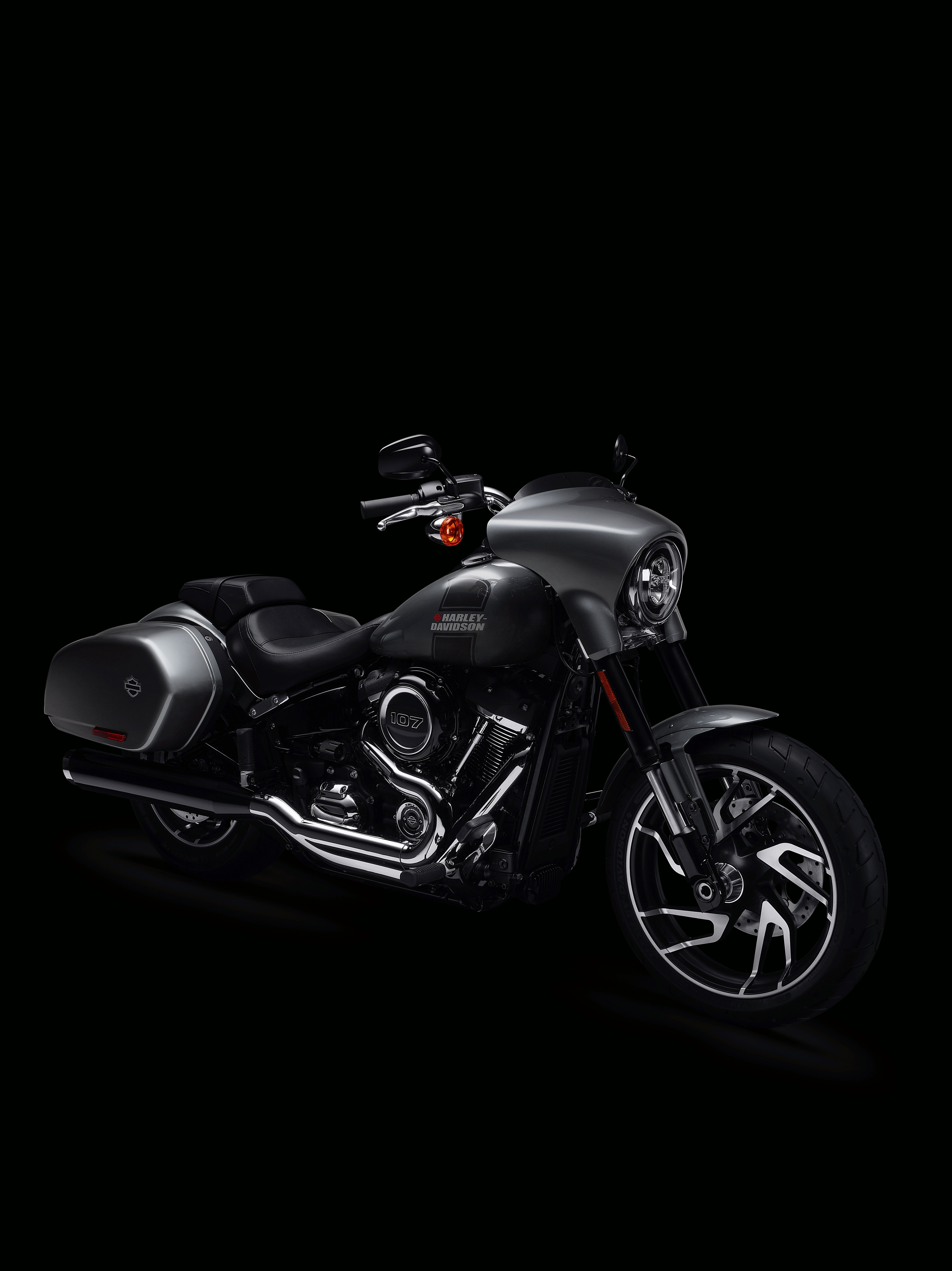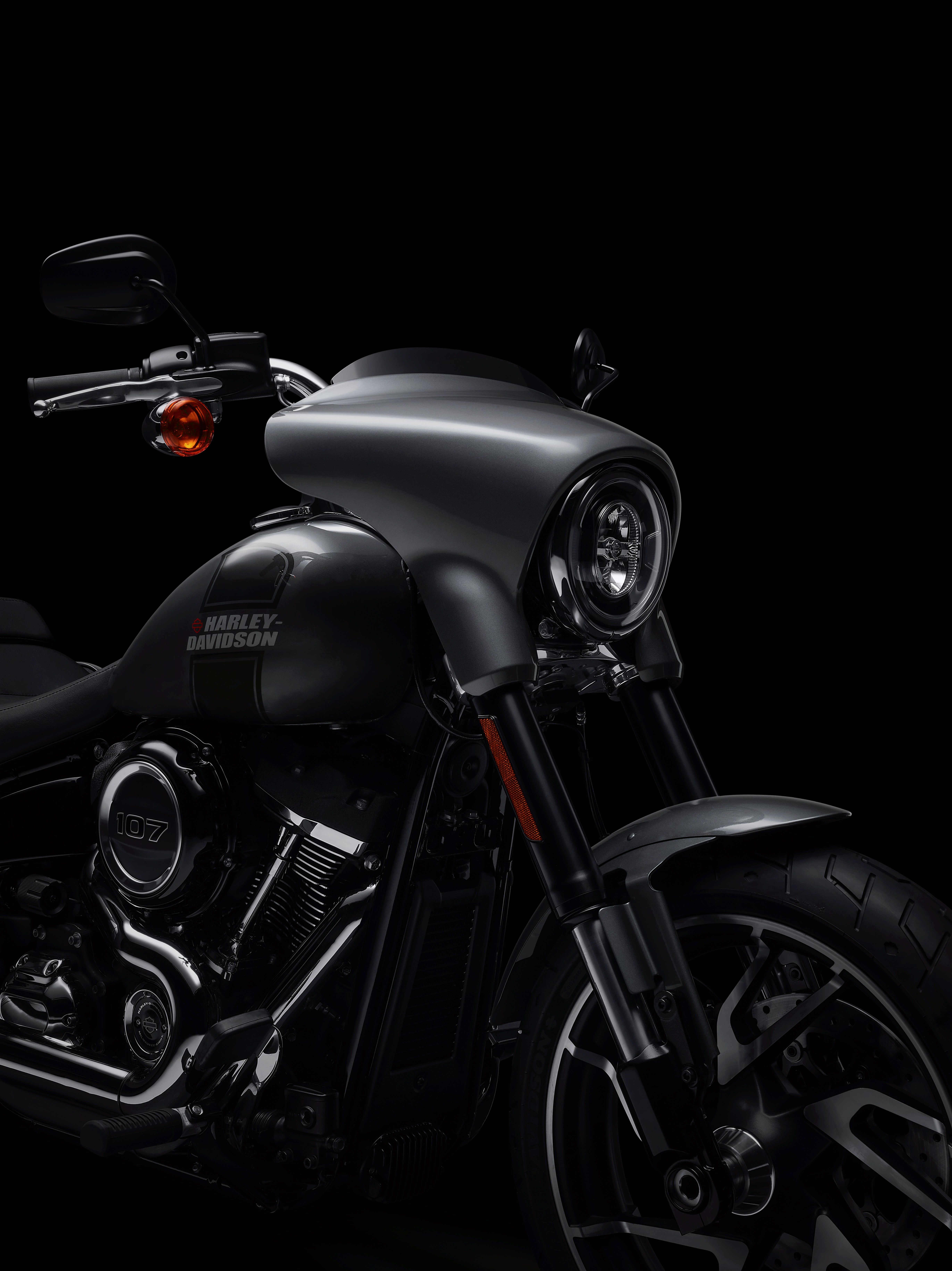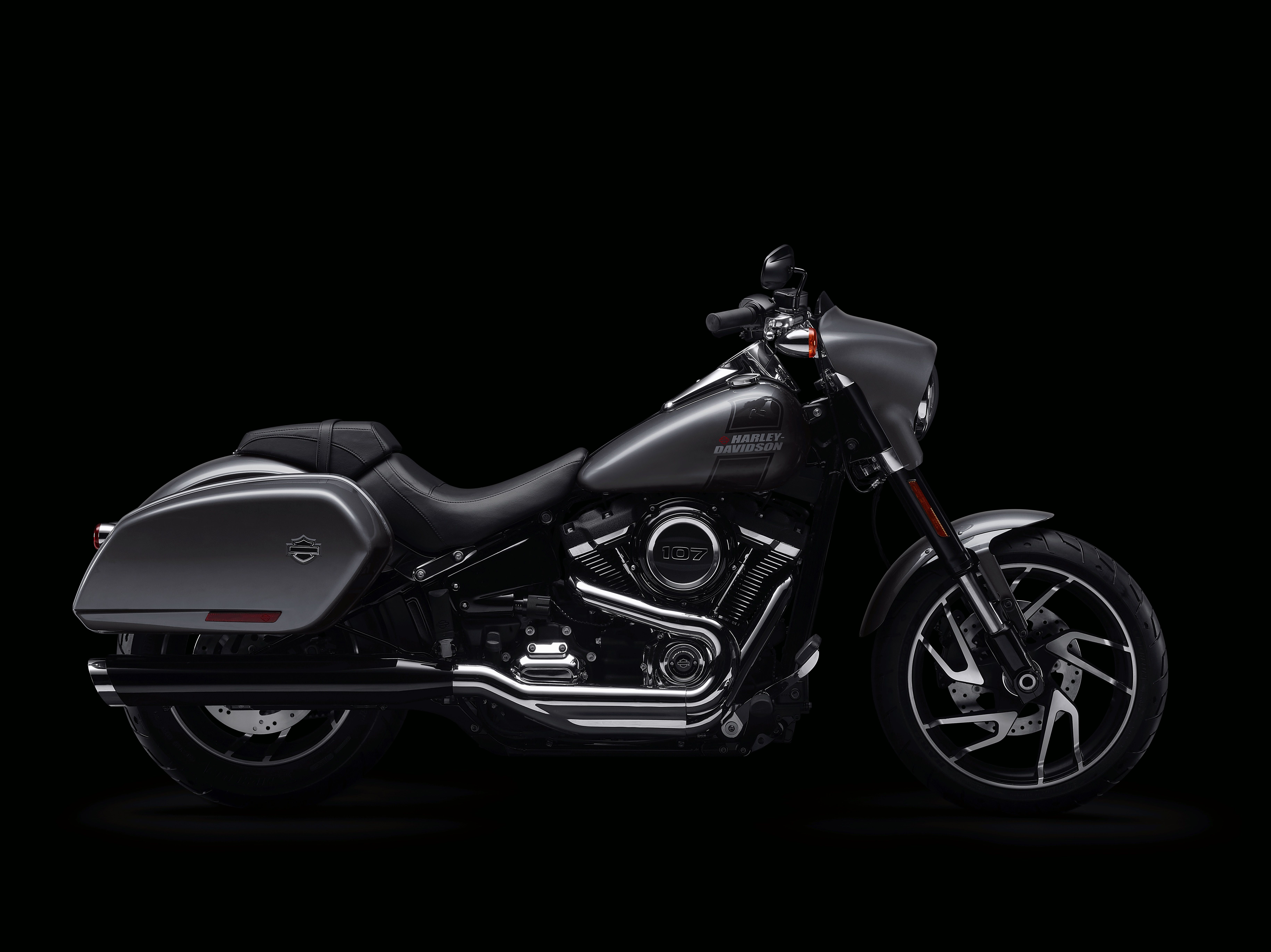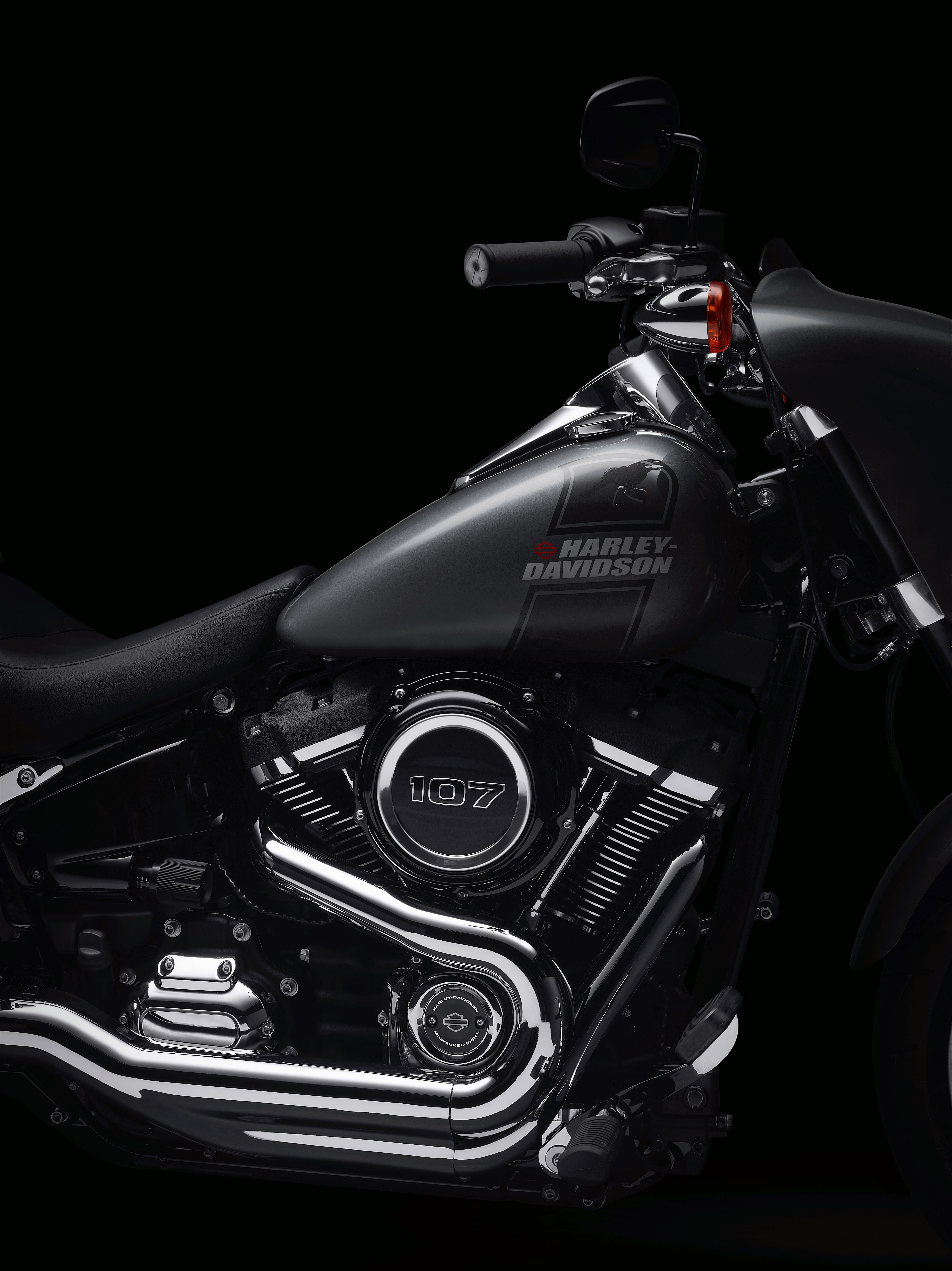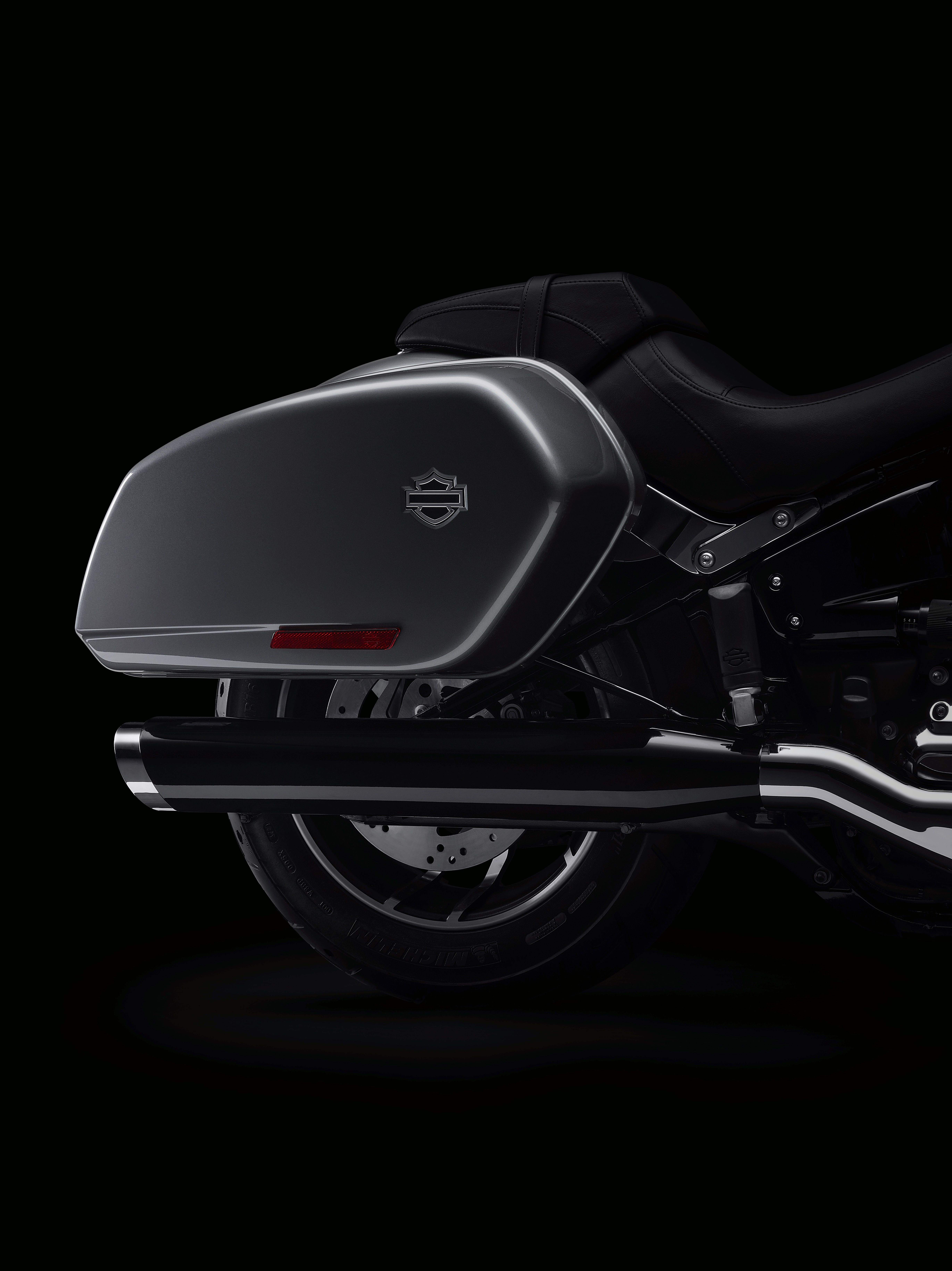Harley-Davidson introduced the Sport Glide in 2018, an all-new Softail model that borrowed from the past while looking to the future. The detachable panniers and mini-fairing give it some (very) light touring capabilities, but it's the 108 pounds of grunt from the Milwaukee-Eight engine that reveals its true nature as a power cruiser.
2018 - 2021 Harley-Davidson Sport Glide
- Make: Array
- Model: 2018 - 2021 Harley-Davidson Sport Glide
- Engine/Motor: V-Twin
Harley-Davidson Sport Glide Design
Not too long ago, Harley-Davidson vowed to release 100 new models over the next decade, and it seems the MoCo is working hard to keep that promise. So far, most of the “new” models have been variations on existing/past models or one of the new Softail models that absorbed some Dyna DNA as the successor to the FXR family was put out to pasture. Today's feature is a combination thereof.
The original Sport Glide aka FXRT (T for Tour) was a bit of a different animal to be sure. Instead of the full bullet fairing carried by the old version, this new SG sports a mini-fairing that looks like someone left a Batwing fairing in the dryer too long, and it can be quickly removed without benefit of tools for a little different look. Same with the smallish lockable hard bags that can be quickly cast off for a cleaner cruiser look.
To give the new SG an undeniably sporty (not Sporty) look, the factory tossed on a set of inverted blackout front forks with black-and-polish “Mantis” wheels that are sharp as a tack if you ask me. Not only is the fairing smaller than that of the original recipe, the windshield is pared down to a mere suggestion in the style popular among the boulevard bruisers. Does it look cool? You bet. Will it protect you? Not a chance. Do we care? Forgetaboutit.
Moving aft we find the speedo in the tank-mount instrument panel along with an LED display and idiot lights to cover the rest of the important info. Rather than carry the chrome torture-reflector that is the instrument panel all the way back to the seat, the factory mercifully opted for some black trim to complete the coverage. The seat itself is typical of Softails with a deep scoop and steep rise to the stadium pillion seat that gives the passenger a reasonable chance to be able to see around and over the pilot.
A flat light strip serves as the taillight with a pair of bullet turn signals set close aboard for minimal clutter, and the tag hangs down below it to act as an extension for the rear fender. Blackout touches can be found at the exhaust and engine, and they tie those components right into the front end for some continuity of design.
All of the sheet metal comes shot in the selected color for the model, but unlike the baggers and full-bore dressers, the panniers came only in black. Starting 2021, the panniers are now color-matched. I like this bike, truly I do, but it resembles the original about as much as chalk to cheese.
Harley-Davidson Sport Glide Chassis
Obviously, as part of Harley's new Softail-ification program, what was previously an FXR model takes on the faux-rigid look that Harley is counting on to carry its cruisers into the next generation of riders. Last year, the Softail lineup received its most serious frame update since its inception back in '84 with something in the neighborhood of half the original frame components getting lopped off to save a ton (no, not literally...) of weight. Rigidity and flexibility are both engineered in, and the new frame really addresses much of the rather uninspired handling and lackluster cornering of the previous gen while the 30-degree rake maintains something of a chopper-esque profile.
The Mantis wheels mount a 130/70-18 up front and a 180/70-16 out back with 64-inches between contact-patch centers and 5.9 inches of trail. Ground clearance is typically low-slung at 4.7-inches off the deck with a 26.5-inch unladen seat height that should make for easy mounting for most riders, and a confident stance to manage the 698-pound curb weight when you deploy your training wheels.
Although non-adjustable, the inverted front forks deliver a superior ride to the previous gen, and the rear shock was repositioned to just beneath the seat (instead of under the freakin' tranny...) with a hand-adjustable preload feature that allows for easy adjustments with no dirty knees or that silly little spanner we used to use. All good stuff, but you'll have to take one for a test ride to fully appreciate the differences between the New Guard and the Old.
|
Lean Angle, Right/Left: |
27.9°/ 28.7° |
|
Rake (steering head): |
30° |
|
Trail: |
5.9 in. |
|
Wheels, Front/Back: |
Black, machine highlighted, Mantis cast aluminum |
|
Brakes, Caliper Type: |
4-piston fixed front and 2-piston floating rear |
|
Tires, Front Specification: |
130/70B18 63H BW |
|
Tires, Rear Specification: |
180/70B16 77H BW |
Harley-Davidson Sport Glide Drivetrain
Back once again is the Milwaukee-Eight 107 that Harley tested in its baggers and dressers in prior years. The classic DNA in the Sport Glide is undeniable with a 45-degree V-twin configuration and external pushrods that would be familiar to even the oldest fans of the brand. Since the Twin Cam met its well-deserved demise, the gearcase/nosecone area has shrunk back to historical proportions and the pushrod geometry returned to the old-school design that has all four tubes converging at a single cam, just as it should be.
A 100 mm bore and 111 mm stroke gives us the typical undersquare ratio and 1,753 cc displacement with a 10-to-1 compression ratio. What does all this give us? Well, the Mil-8 produces 108 pound-feet of torque at an incredibly low 2,750 rpm, so once you wash that power through the six-speed transmixxer you get a bike that can cruise at reasonable revolutions. Not only does the relaxed pace of the engine make for a pleasant ride, but a counter-balance system in the engine tames the vibrations so you can no longer use a trip down the interstate to remove those pesky excess fillings. Purists say they went too far, but I, for one, can do without my hands going to sleep on me everytime I hit the superslab.
As usual, Harley still shuns the fandanglery with nothing in the way of RbW, traction control or rider modes to be found. That's OK though; I find skill to be more important than crutches, though for many nowadays that is definitely a dealbreaker. (See: skills). The 2-into-1 exhaust system contains a catalytic-converter to help meet emissions standards and the plant turns in a 47 mpg fuel-economy rating for a 200-plus mile range from a full five-gallon fuel tank.
|
Engine: |
Milwaukee-Eight® 107 |
|
Bore x Stroke: |
3.937 in. x 4.375 in. |
|
Displacement: |
107 cu in |
|
Compression Ratio: |
10.0:1 |
|
Engine Torque (J1349): |
108 lb-ft @ 2,750 rpm |
|
Fuel System: |
Electronic Sequential Port Fuel Injection (ESPFI) |
|
Exhaust: |
2-into-1; catalyst in muffler |
|
Primary Drive: |
Chain, 34/46 ratio |
|
Gear Ratios (overall): |
1st: 9.311, 2nd: 6.454, 3rd: 4.793, 4th: 3.882, 5th: 3.307, 6th: 2.79 |
Harley-Davidson Sport Glide Price
Harley's tiered pricing puts the 2021 Vivid Black Sport Glide at $18,649 and the color options for another four Benjamins. For 2019, the factory offers custom colors for $19,599 and a two-tone choice for $19,799. ABS, the security system, and cruise control all come standard.
|
Model ID: |
FLSB |
|
Standard Equipment: |
ABS, Security System, Cruise Control |
|
Colors: |
|
|
└ 2018: |
Vivid Black, Twisted Cherry, Silver Fortune |
|
└ 2019: |
Vivid Black, Twisted Cherry, Wicked Red, Midnight Blue, Barracuda Silver, Kinetic Green, Scorched Orange/Black Denim |
|
└ 2020: |
Vivid Black, Midnight Blue, River Rock Gray Denim, Performance Orange, Tahitian Teal, Scorched Orange/Silver Flux |
|
└ 2021: |
Vivid Black, Vivid Black Deluxe, Gauntlet Gray Metallic, Stone-washed White Pearl |
|
Price: |
|
|
└ 2018: |
Vivid Black: $18,599, Color: $18,999 |
|
└ 2019: |
Vivid Black: $18,649, Color: $19,049, Custom Color: $19,599, Two-Tone Custom Color: $19,799 |
|
└ 2020: |
Vivid Black: $18,599, Color: $18,999, Custom Color: $19,549, Two-Tone Custom Color: $19,749 |
|
└ 2021: |
Vivid Black: $18,599, Color: $19,049 |
Harley-Davidson Sport Glide Competitor
When I started this look at the Sport Glide, I wasn't sure if I could find something close enough for a fairly direct head-to-head, but Suzuki was my Huckleberry with its Boulevard M109R “B.O.S.S.”
Suzuki Boulevard M109R B.O.S.S.
The Blacked Out Special Suzuki seeks to strike the same sort of chord as the Sport Glide with a small, non-bullet fairing that does little more than shelter the top of the headlight, but does look pretty cool. A beefy inverted front end suggests great strength while the sweeping lines over the rest of the bike lend it the impression of speed, as well. Tank-mount instrumentation and a deep-scoop seat gives the BOSS a similar profile, but the two-up seat comes with a cover that snaps on to give the appearance (and function) of a solo.
A steel double-downtube/double-cradle frame and cast-aluminum swingarm forms the standing structure with 46 mm usd forks and an inconspicuous rear shock on suspension duties. All very similar to the SG, and equally as vanilla. One thing I'm definitely proud to see on the BOSS would be the dual front brakes. Sorry Harley, but a single up front on a bike that tops 800 pounds with a rider on it borderlines on criminal, and I don't care how much the ABS allows you to use it to the max; dual anchors is the way to go. M'yeah, see? On the flipside, Suzuki shuns ABS entirely, and that's a trade off that may alarm buyers who cut their teeth on that safety net.
Americans like their V-twins big, and Suzuki obliges with a 1,783 cc powerplant set at 54 degrees that gives us what we want in a configuration that we like. Power figures are sketchy, but honestly, you can expect these mills to be in the same neighborhood up in the power-cruiser bracket. Suzuki also keeps the gadgetry to a minimum but graces the engine with its proprietary dual throttle valve technology that smooths out the discrepancies that can develop between demand at the wrist and response by the engine for hesitation-free transitions throughout the range.
Naturally, Suzuki picks up a win at the checkout with a $15,249 sticker that is significantly less expensive than the lowest-price Sport Glide. No, that won't deter any Harley fans, but it may be the deciding factor for folks with no previously-established brand loyalty.
Read our full review of the Suzuki Boulevard M109R B.O.S.S..
He Said
“Ya know, this is a fine ride, no mistake about it, but I'm disappointed. When I heard they were bringing back the Sport Glide, I immediately started dreaming of the '89 FXRP (police version of the “T”) I used to own, and even dared to hope the MoCo was resurrecting the FXR frame. My disappointment was short lived when I learned the truth, 'cause while this bears little to no resemblance to the original, it's got a charm all its own.”
She Said
My wife and fellow motorcycle writer, Allyn Hinton, says, "I really like it. I don't usually like batwing fairings, but I'm really digging this miniature one as far as looks go. I'm curious about the storage capacity, though. Honestly, those bags don't seem big enough to be anything but vestigial space at best, but it could be my expectations that are getting in the way. Overall, I like the new bike. I'm really quite excited about the new Softail performance and handling."
Harley-Davidson Sport Glide Specifications
|
Engine & Drivetrain: |
|
|
Engine: |
Milwaukee-Eight® 107 |
|
Bore x Stroke: |
3.937 in. x 4.375 in. |
|
Displacement: |
107 cu in |
|
Compression Ratio: |
10.0:1 |
|
Engine Torque (J1349): |
108 lb-ft @ 2,750 rpm |
|
Fuel System: |
Electronic Sequential Port Fuel Injection (ESPFI) |
|
Exhaust: |
2-into-1; catalyst in muffler |
|
Primary Drive: |
Chain, 34/46 ratio |
|
Gear Ratios (overall): |
1st: 9.311, 2nd: 6.454, 3rd: 4.793, 4th: 3.882, 5th: 3.307, 6th: 2.79 |
|
Chassis: |
|
|
Lean Angle, Right/Left: |
27.9°/ 28.7° |
|
Rake (steering head): |
30° |
|
Trail: |
5.9 in. |
|
Wheels, Front/Back: |
Black, machine highlighted, Mantis cast aluminum |
|
Brakes, Caliper Type: |
4-piston fixed front and 2-piston floating rear |
|
Tires, Front Specification: |
130/70B18 63H BW |
|
Tires, Rear Specification: |
180/70B16 77H BW |
|
Dimensions & Capacities: |
|
|
Length: |
91.7 in. |
|
Seat Height, Laden: |
7 25.7 in. |
|
Seat Height, Unladen: |
26.5 in. |
|
Wheelbase: |
64 in. |
|
Ground Clearance: |
4.7 in. |
|
Fuel Capacity: |
5 gal. |
|
Fuel Economy: |
47 mpg |
|
Oil Capacity (w/filter): |
5 qt. |
|
Weight, As Shipped: |
670 lb. |
|
Weight, In Running Order: |
698 lb. |
|
Top Speed: |
115 mph (governed) |
|
Electric: |
|
|
Lights (as per country regulation), Indicator Lamps: |
High beam, turn signals, neutral, low oil pressure, engine diagnostics, cruise, ABS, security, low battery voltage, low fuel |
|
Gauges: |
5-inch analog speedometer with digital gear, odometer, fuel level, clock, trip, range and tachometer indication |
|
Details: |
|
|
Model ID: |
FLSB |
|
Standard Equipment: |
ABS, Security System, Cruise Control |
|
Colors: |
|
|
└ 2018: |
Vivid Black, Twisted Cherry, Silver Fortune |
|
└ 2019: |
Vivid Black, Twisted Cherry, Wicked Red, Midnight Blue, Barracuda Silver, Kinetic Green, Scorched Orange/Black Denim |
|
└ 2020: |
Vivid Black, Midnight Blue, River Rock Gray Denim, Performance Orange, Tahitian Teal, Scorched Orange/Silver Flux |
|
└ 2021: |
Vivid Black, Vivid Black Deluxe, Gauntlet Gray Metallic, Stone-washed White Pearl |
|
Price: |
|
|
└ 2018: |
Vivid Black: $18,599, Color: $18,999 |
|
└ 2019: |
Vivid Black: $18,649, Color: $19,049, Custom Color: $19,599, Two-Tone Custom Color: $19,799 |
|
└ 2020: |
Vivid Black: $18,599, Color: $18,999, Custom Color: $19,549, Two-Tone Custom Color: $19,749 |
|
└ 2021: |
Vivid Black: $18,599, Color: $19,049 |
Further Reading
Harley-Davidson
Read more Harley-Davidson news.

